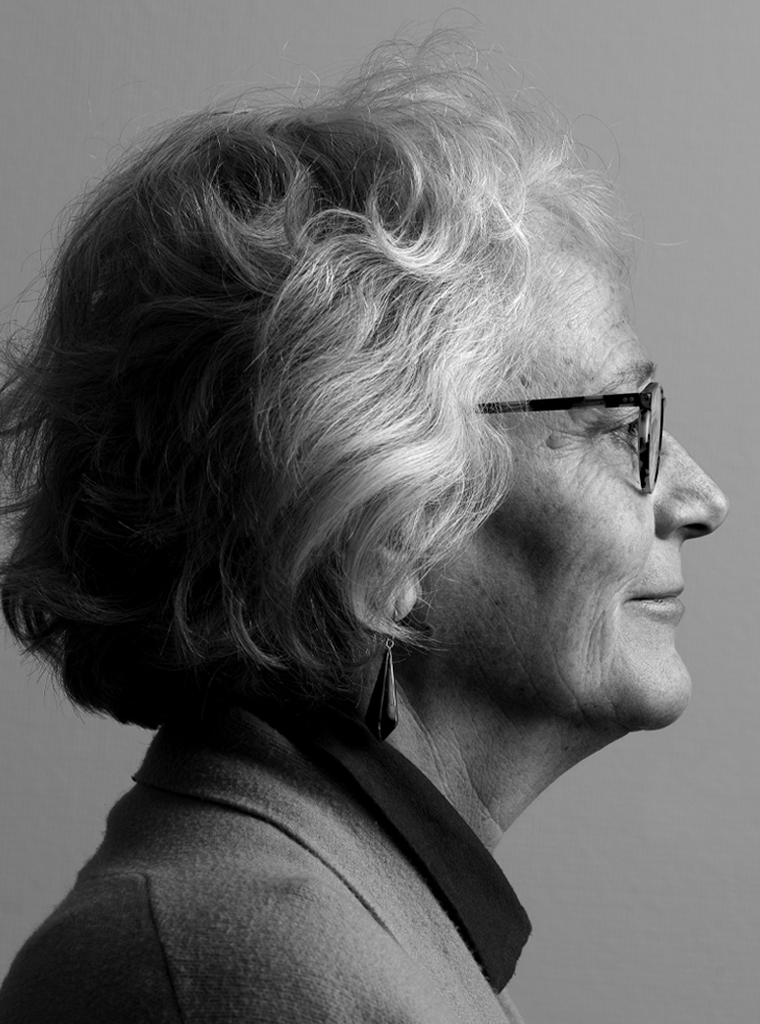Most of the readers of Roots will know Marie Christine van der Sman mainly as the former director of the Dutch Graphic Designers Archives. The author of this Roots knew her that way too, but there turned out to be much more that shaped her career.
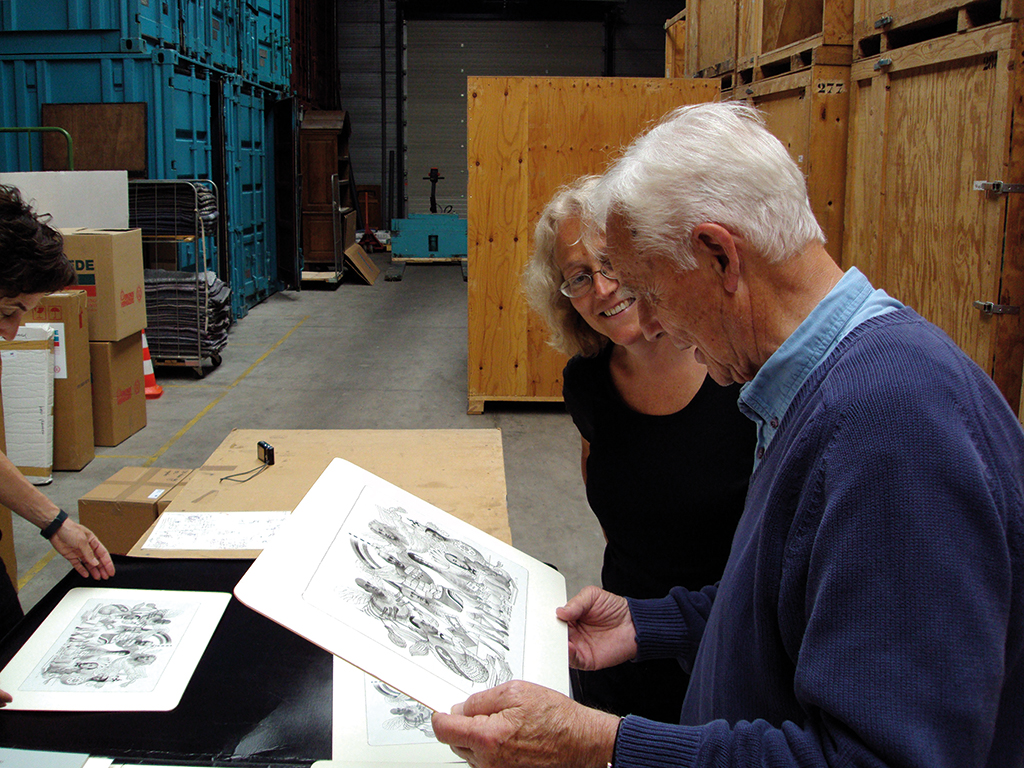
Ootje Oxenaar shows his archive at depot in Wassenaar, 2009
A family of artists
There are two central threads running through her working life: heritage and graphic design. Her interest in graphic design arose at home. Her father, Pieter van der Sman, was trained as an advertising illustrator at the Academy of Art in Rotterdam (the current Willem de Kooning Academy) and worked at publisher Kluwer in Deventer. Marie Christine was born in Deventer, the City of Books, on 17 February 1957, as the eldest of four children. At that time, her father was the permanent graphic designer of the publishing house’s tax guides and legal books.
At home, there was much talk about graphic design. Pieter van der Sman was inspired by artists and designers such as Victor Vasarely, Eric Gill and Hendrik Nicolaas Werkman. Their house in Deventer – and later in Schalkhaar – was also a meeting place for artists and designers such as Jacques Magendans, Jan Slijkhuis, Jef Koning and Walter Nikkels. This was mainly because her mother, painter and ceramist Tine van Ipenburg, loved socialising and making music.
Graphic design during her studies
At the Geert Groote College, the secondary school Marie Christine attended in 1969, she took care of the design of the school magazine as well as the University of Groningen, where she later studied history, and for three years she designed Groniek, a scientific historical magazine that is still published four times a year.
Marie Christine has always had a wide range of interests. During her studies she also attended courses in museology and art history. One of her lecturers was Henk van Os, professor of art and cultural history of the Middle Ages at the University of Groningen and later director of the Rijksmuseum in Amsterdam.
One of her first achievements in the field of exhibitions was the exhibition on propaganda for the Gothic architectural style, in the University Museum Groningen in 1979. She wrote texts, designed the cover for the catalogue and took care of the overall design of the exhibition. As a student assistant in media studies, she also supervised the design of the Maerlant exhibition at the Kunsthistorisch Instituut (Institute of Art History).
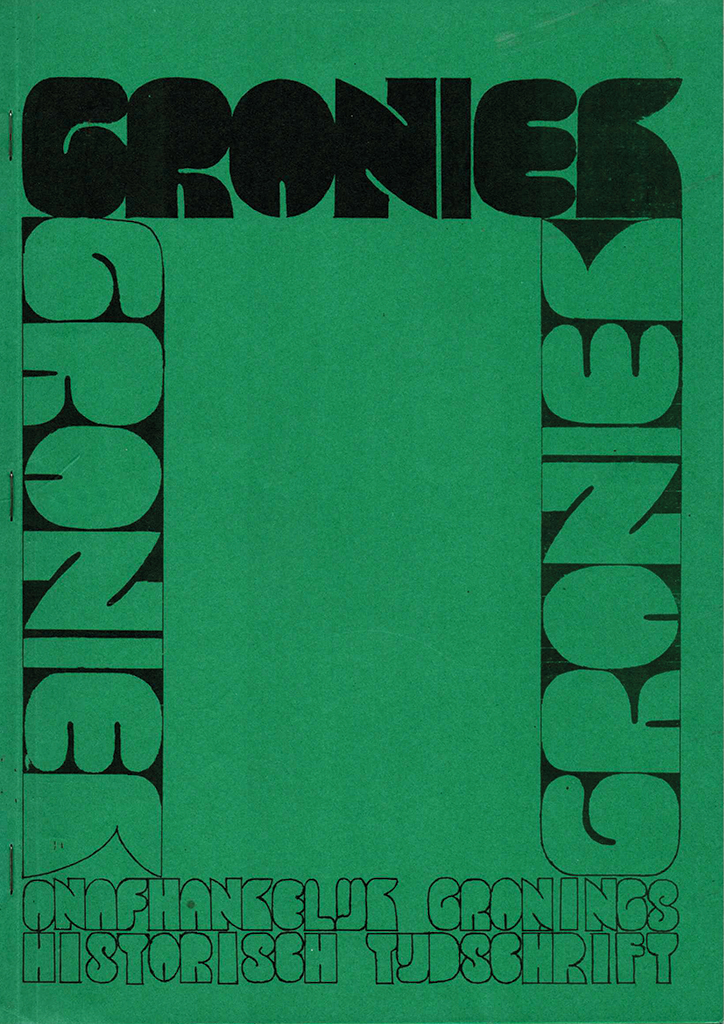
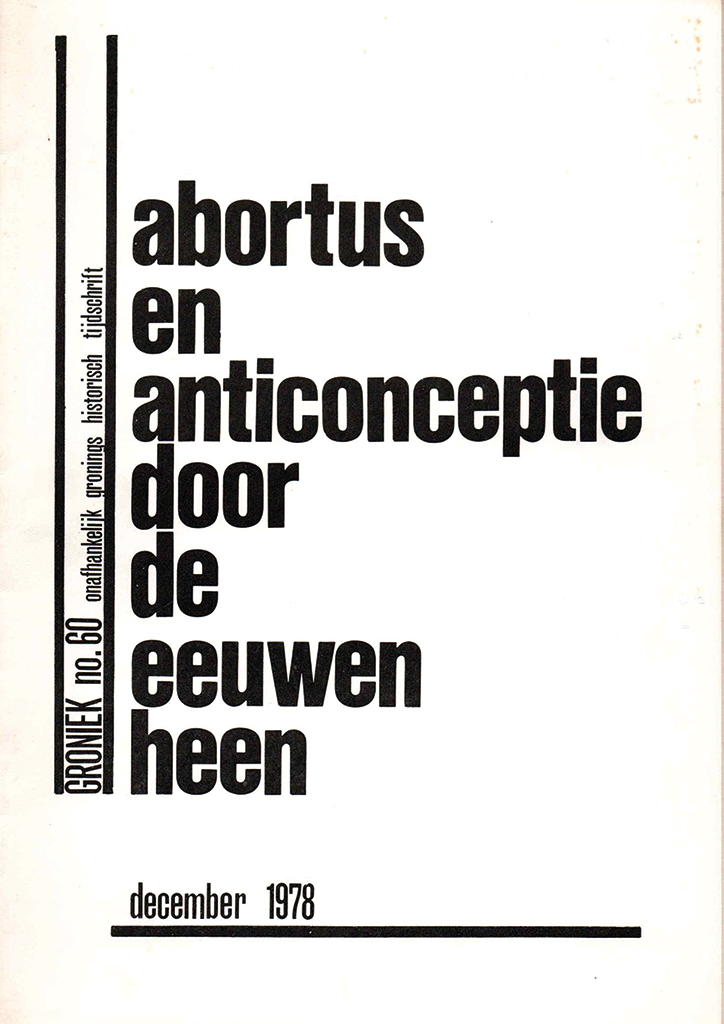
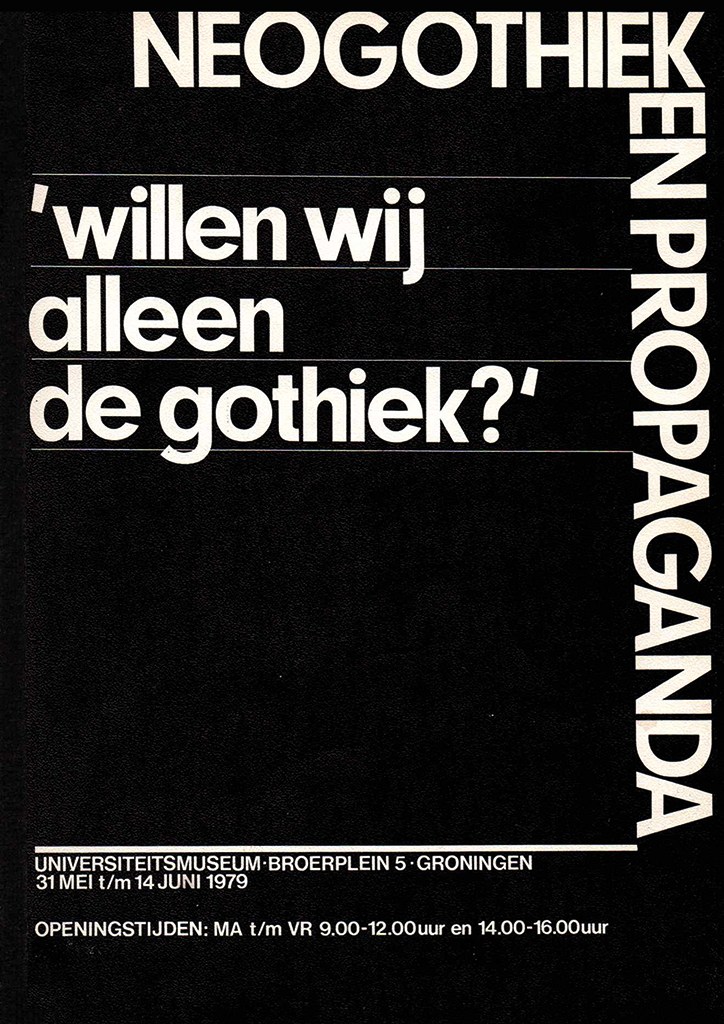
Publications during her studies, 1976-1979
From Groningen to Heerenveen
After her studies, Marie Christine became a history teacher at the Hogeland secondary school in Warffum. At the same time, she made exhibitions for curator Lies Boiten at the historical department of the Groninger Museum, such as the educational exhibition Harmina en de Vlasfabriek (Harmina and the flax factory) on social injustice in the nineteenth century.
As a result of that exhibition, she was invited to create the educational project Domela komt! (Domela is coming!) About the legendary socialist leader Domela Nieuwenhuis in Museum Willem van Haren in Heerenveen. Not long after that, she became the director of the museum. At the age of 29 she was one of the youngest museum directors in the Netherlands.
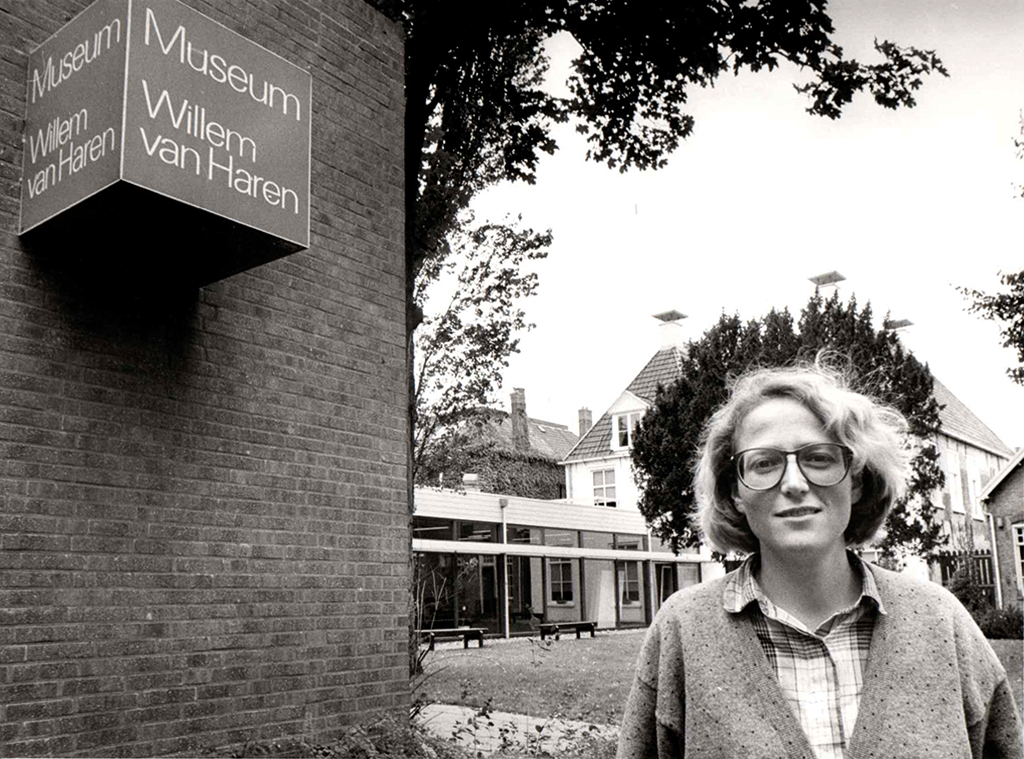
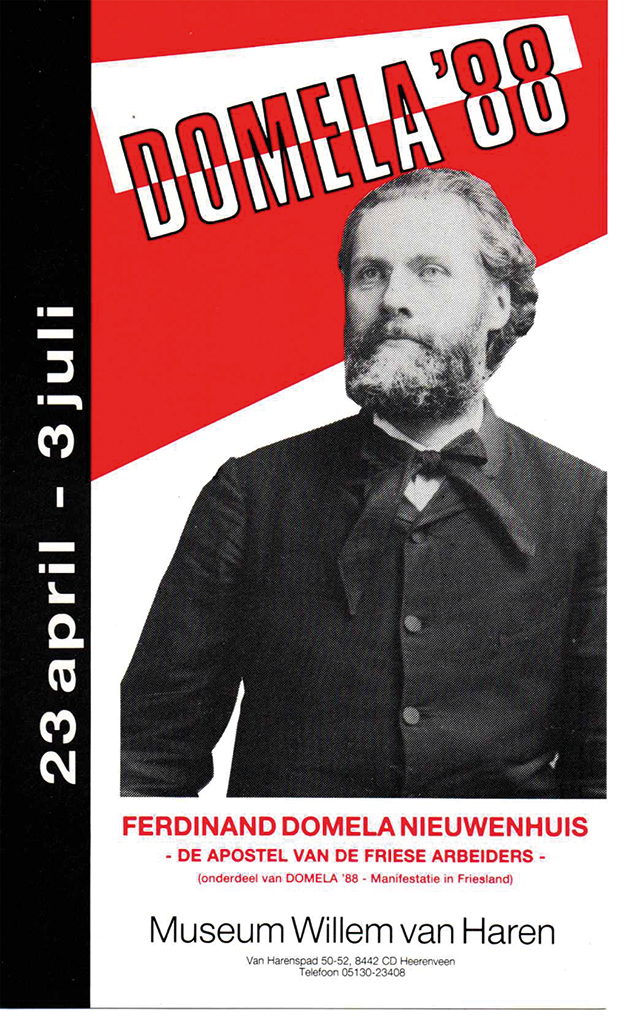
Museum Willem van Haren
Marie Christine van der Sman in front of Museum Willem van Haren in Heerenveen, 1989. Photo Leeuwarder Courant.
Exhibition Ferdinand Domela Nieuwenhuis, 1988
From the moment she took control, she paid great attention to the design of printed matter and exhibitions. In that respect, the Groninger Museum, led by director Frans Haks, was an inspiring learning experience. Designers such as Alje Olthof, Henk Suurling and Ebe Treffers designed the exhibitions. With great interest she had observed how the designers made the layout of the texts on the walls. There were no computers at this time yet, so friction characters were meticulously pasted on panels by hand.
One of the highlights during her directorship was the exhibition about the painter Jan Mankes, which was organised in collaboration with the Arnhem Municipal Museum and the Rijksprentenkabinet (Print Room). The catalogue, designed by Wigger Bierma and edited by Frederike Bruyel-van der Palm and Marie Christine van der Sman, is still a timeless jewel (published by Veen Reflex). The exhibition Mensen van macht en aanzien (People of power and prestige) about the Frisian nobility received good reviews, including in NRC Handelsblad, and was the reason to organise an exhibition about the art collections of the Frisian nobility in the Institut Néerlandais in Paris.
The Historical Museum of The Hague
In early 1990, Marie Christine – married to cultural anthropologist and university lecturer Wim Hofstee since 1986 – moved to The Hague, where their son Peter was born a year later. In The Hague she was the first director of the recently opened Historical Museum of The Hague. After working in Friesland, it was a relief to have more budget for exhibitions and design.
She conceived and supervised exhibitions for over nine years. She also safely guided the museum through a period of municipal budget cuts. It was a turbulent yet also inspiring period in which many things were tried out. For example, she had the floors of the seventeenth-century Sebastiaansdoelen, where the Historical Museum of The Hague is housed, reinforced to be able to display an exhibition on the schoon metselwerk (clean masonry) of architect Co Brandes.
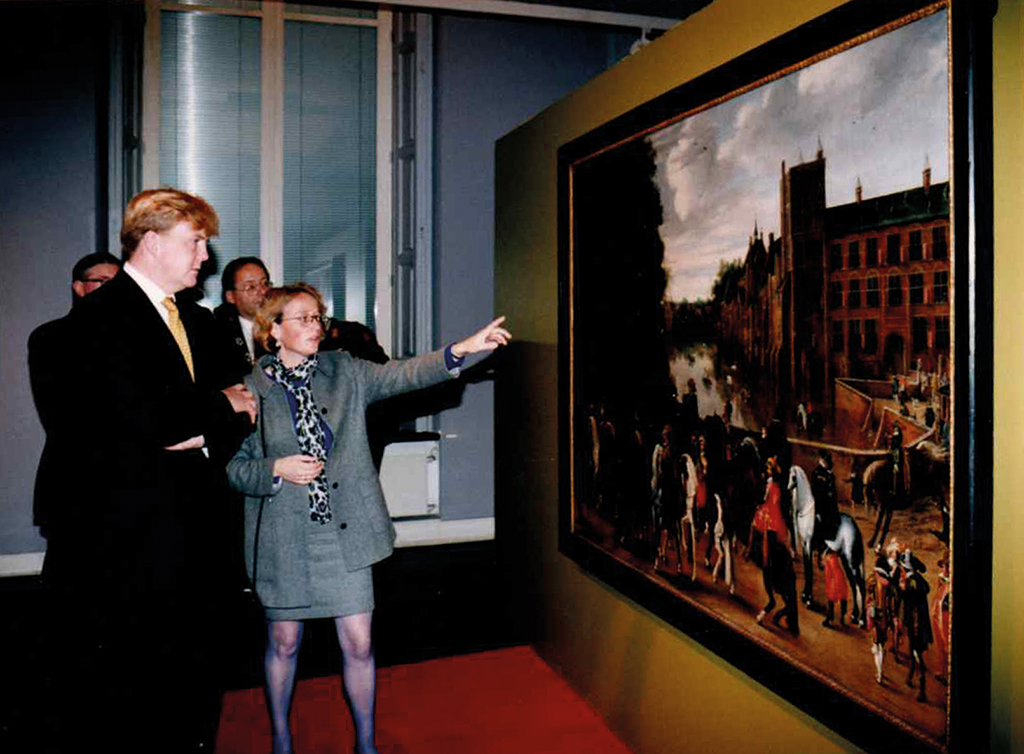
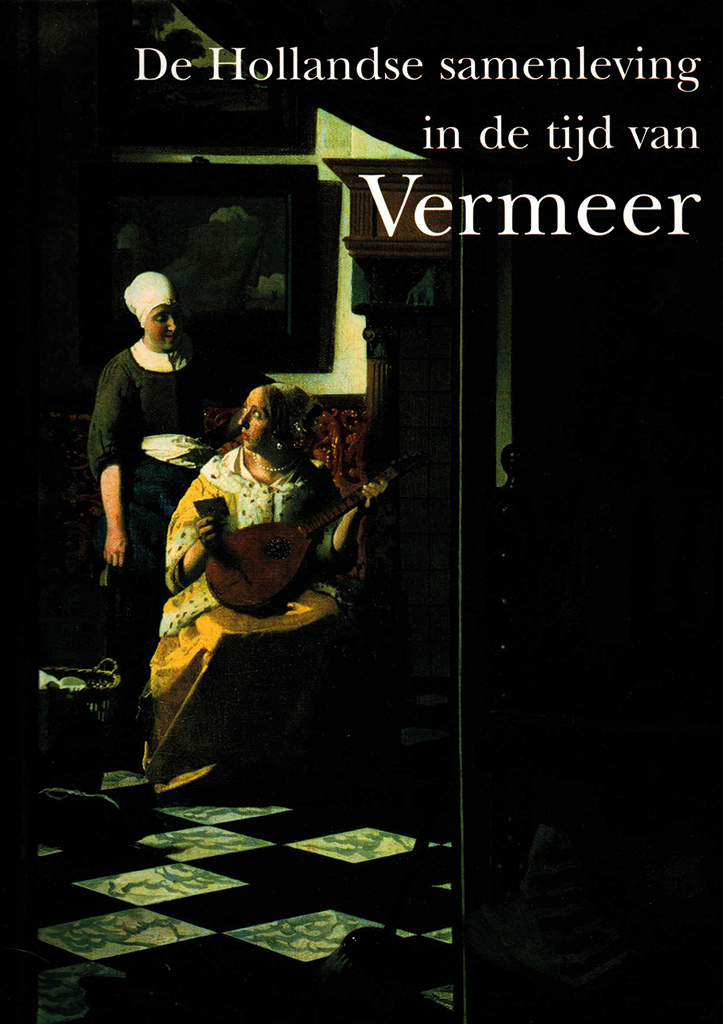
The Historical Museum of The Hague
Opening exhibition Vorstelijk Vertoon (Royal Show) with (then) Crown Prince Willem Alexander, 1997
Exhibition catalogue Hollandse samenleving in de tijd van Vermeer (Dutch society in the time of Vermeer), 1996.
With blockbusters such as Oranje-Romanov, Hollandse samenleving in de tijd van Vermeer (Dutch society in the time of Vermeer) (published by Waanders, designed by Gijs Dragt) and Vorstelijk vertoon aan het hof van Frederik Hendrik en Amalia (Royal display at the court of Frederik Hendrik and Amalia) (published by Waanders, designed by Harry Veltman and Jaap Hofman), in close collaboration with the Mauritshuis, she put the Historical Museum of The Hague on the map – both nationally and internationally.
Museum Meermanno
In 1999, she moved on to the Museum Meermanno/House of the book, where Wim Crouwel was chairman of the Supervisory Board at that time.
“The Historical Museum was finished. The municipality did not want to further expand it, and I could have made exhibitions there for many years to come, but after nine years I was ready for something else. Establishing a new museum and organising other activities – new things. Around that time Ton Brandenbarg was about to leave, and I thought: well this looks like great fun, there is a renovation coming up and I have never done that, I would love to pick that up.“ (De Boekenwerld, volume 17, 2001-2002)
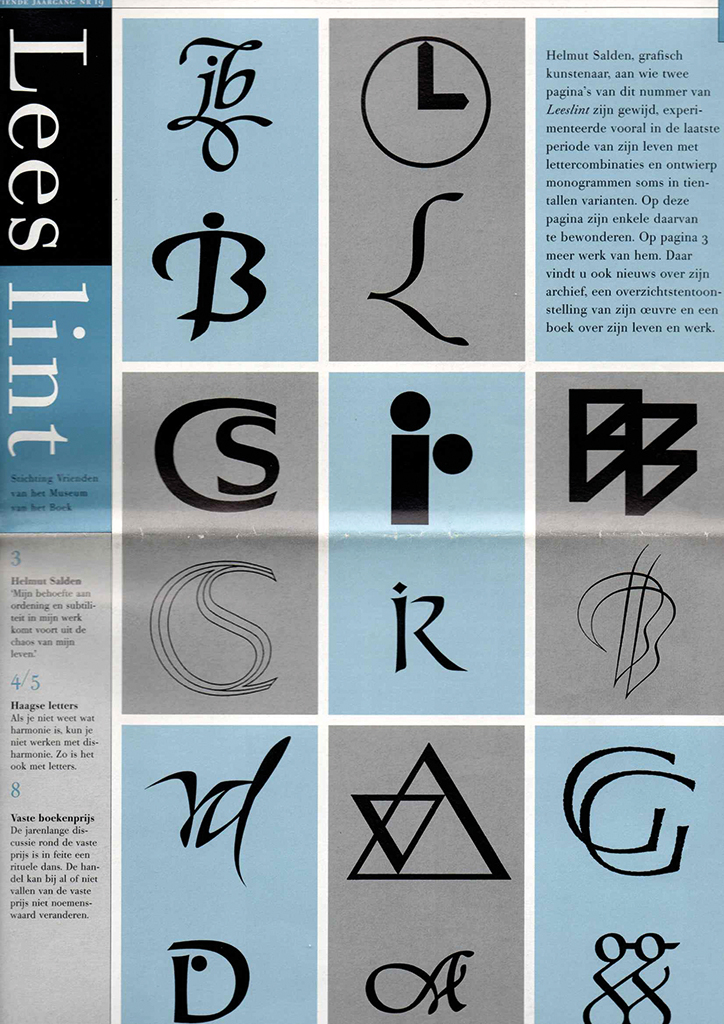
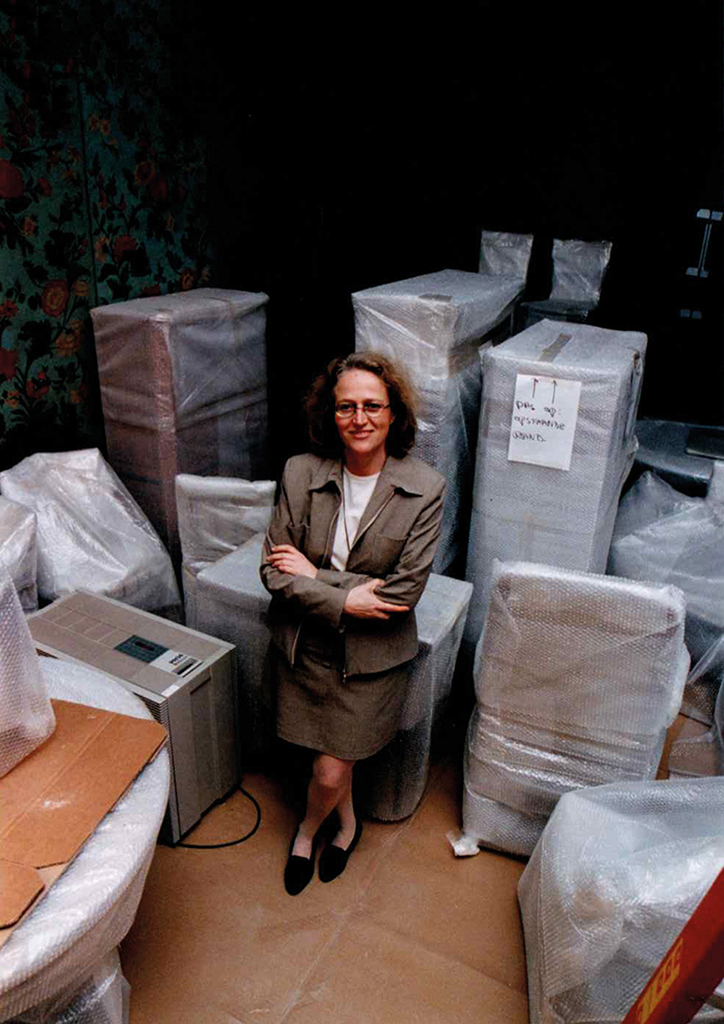
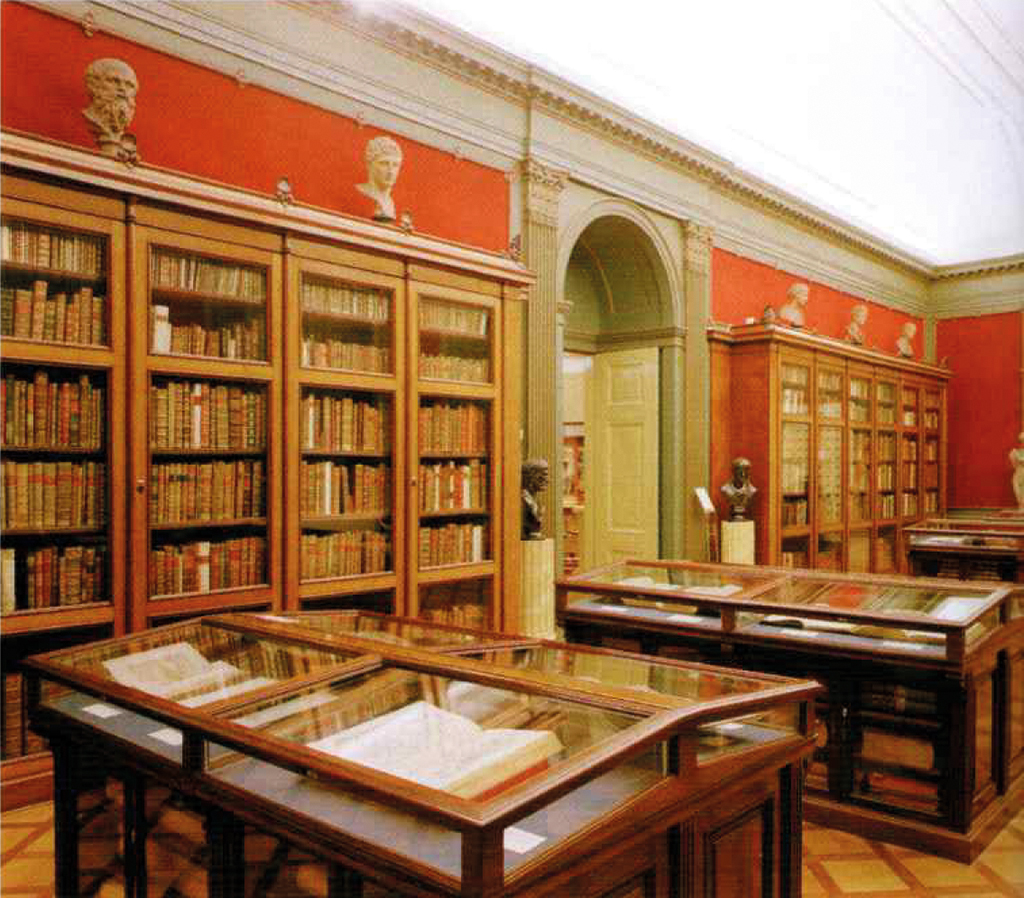
Museum Meermanno
Friends magazine Leeslint October 2000
Packing the collection before Meermanno is renovated.
Redesign of the museum.
During the four and a half years that Marie Christine was director of Meermanno, the museum was renovatedcompletely by the Government Buildings Agency and redesigned under the artistic direction of architect Karel Rosdorff. The exhibition space became twice as large by connecting the adjacent building to the original museum. Three educational workshops were created in the attic: a medieval scriptorium, a nineteenth-century printing office and a computer lab for modern printing. In a brand new and well-equipped depot in the Koetshuis, 2.5 kilometers of books (including valuable manuscripts and old prints) were given a new place. The graphic design was in the hands of Feddow Claassen and Hans Pols of Multidisciplinary Design Agency Keen from The Hague.
Exhibition highlights of the Meermanno include: Praal, ernst en emotie. De wereld van het Franse middeleeuwse handschrift (Piety, seriousness and emotion. The world of the French medieval manuscript) (designed by Anton Spruit, published by Waanders) and H.Th. Wijdeveld. Art Deco-ontwerpen op papier (H.Th. Wijdeveld. Art Deco designs on paper) (designed by Piet Gerards, published by 010 Publishers).
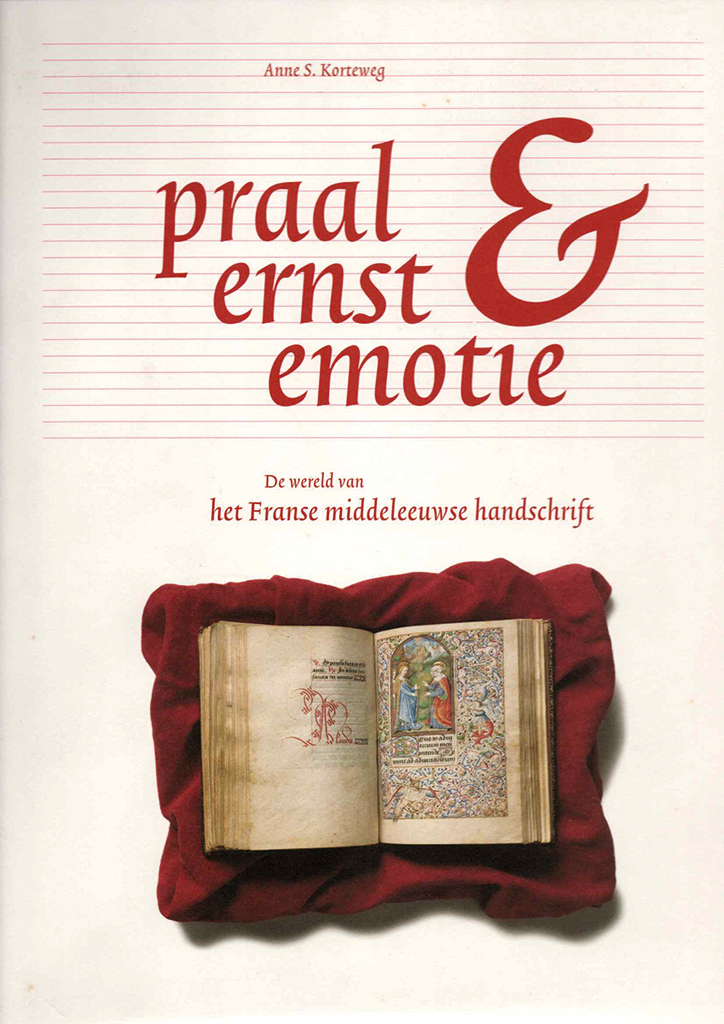
Museum Meermanno
Exhibition catalogue Praal, Ernst & Emie, 2002
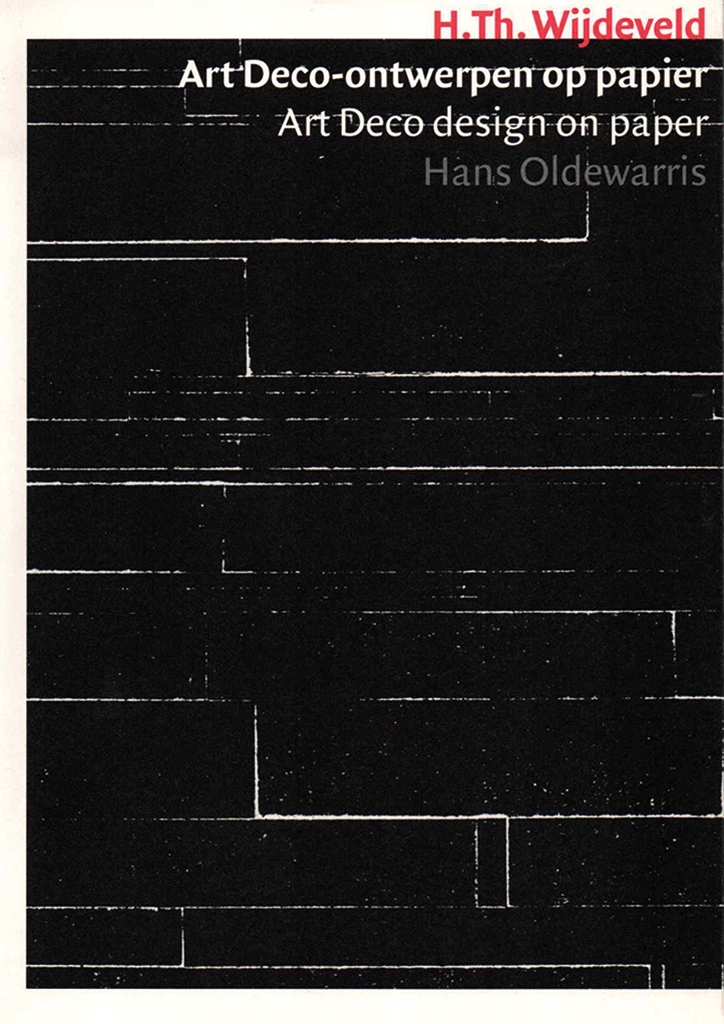
Museum Meermanno
Exhibition catalogue H.Th. Wijdeveld, 2003
“I think the greatest acquisition during my directorship was the complete archive of graphic designer Helmut Salden, which was donated to the museum by Katja Franken, the widow of the designer, at the end of 2000. It wasn’t just several thousand book covers, proofs, sketches and type designs, but also the private correspondence with authors and artists of his time, such as Jan Tschichold and Otto Treumann. A monumental work in the oeuvre of Salden is the series of the Russian Library of Van Oorschot Publishers. It consists of 44 volumes. The covers show Salden’s drawing in its optimal form. A reprint has been made based on the original design, which demonstrates the timelessness of Salden’s work.” (Leeslint, October 2003). The magazine Leeslint was designed by Suzan Beijer and Tessa van der Waals.
Working for the museum sector
After the renovation was completed, a short intermezzo at the Dutch Museums Association followed. Her wish, to turn this association with more than four hundred museum members into a sector association with a strong lobby at the House of Representatives, received little support within the organisation. Moreover, the board did not follow her when she wanted to reorganise the association financially. After a year and a half, she left Amsterdam disappointedly.
However, she did not despair and became a senior advisor to Virtuoos organisational consultants and interim managers. She chose a small office as her work location at CiT, housed in a building of the Museum for Communication in The Hague. She worked at Virtuoos from 2004 to 2011. Among other things, she helped the municipality of The Hague in preparing a new Arts Plan and raised funds for the Dutch Graphic Designers Archives (NAGO). She also advised the Graphic Design Museum in Breda, Groeneveld Castle in Baarn, the Musea Zutphen and a number of other museums, such as Boijmans van Beuningen and the Wereldmuseum in Rotterdam. She also established the digital museum helpdesk MuseumService.
Blue Shield – the ‘Red Cross’ for cultural heritage
Meanwhile, Marie Christine has also committed herself to international heritage. The International Committee of the Blue Shield (ICBS) was established in 1996 after the destruction of the archives of the first independent African state of Liberia, the fire in the Sarajevo library and the looting of the monuments of Angkor Wat in Cambodia, all in a short period of time. Marie Christine was the first chairman of Blue Shield the Netherlands (from 1999 to 2007).
For example, under her chairmanship Holger de Kat, a Dutch restoration architect, accompanied Dutch soldiers to the Macedonian capital of Skopje on behalf of Blue Shield. There, in military uniform, he recorded the damage suffered by a Greek Orthodox church caused by conflicts between Albanians and Christians. He also advised local authorities on how to deal with the damage initially. The entrance to the severely damaged church was secured with wooden doors, which were made by a local carpenter with instructions by the architect. The expenses were paid by the embassy of the Netherlands.
“Cultural aid is still in its infancy,” Marie Christine van der Sman admits. “Blue Shield wants to be a kind of Red Cross for cultural heritage. The aid itself has nothing to do with politics.” According to her, the aid “is currently still restoration work, but the intention is to structurally tackle the rescue of cultural heritage that is under threat, also in the Netherlands. Ultimately, it should transform into widespread international aid.”

Blue Shield Netherlands
Cultural aid in Angkor Wat, Cambodia
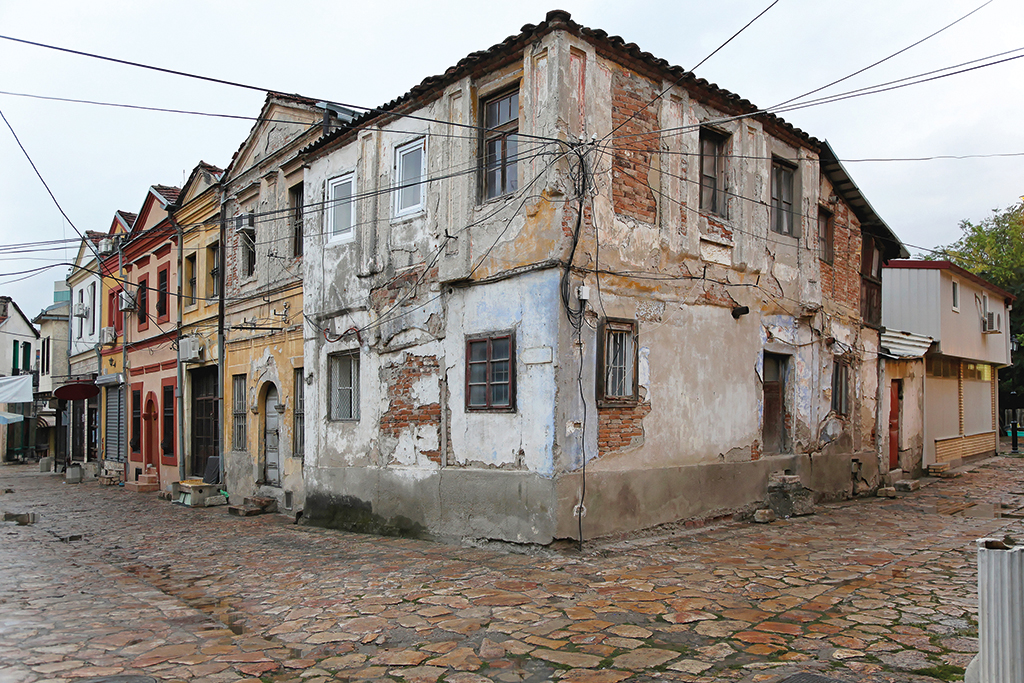
Blue Shield Netherlands
Cultural aid in Skopje, Macedonia
The Dutch Graphic Designers Archives
At the initiative of Ben Bos, the Dutch Graphic Designers Archives Foundation (NAGO) was established in 1992 with the aim of acquiring and preserving the archives of important Dutch or Dutch-based graphic designers. Thanks to funding from the government and support from BNO, NAGO was able to secure many archives and make them accessible.
On the recommendation of Titus Yocarini, the then chairman of NAGO, and the then coordinator Karin van der Heiden, Marie Christine was asked to raise funds when government support decreased – and with success. A collective application submitted by NAGO, the Graphic Design Museum in Breda and the University of Amsterdam to the BankGiroLoterij was granted. Additionally, the Mondriaan Foundation also contributed financially to the preservation of design heritage and making it accessible.
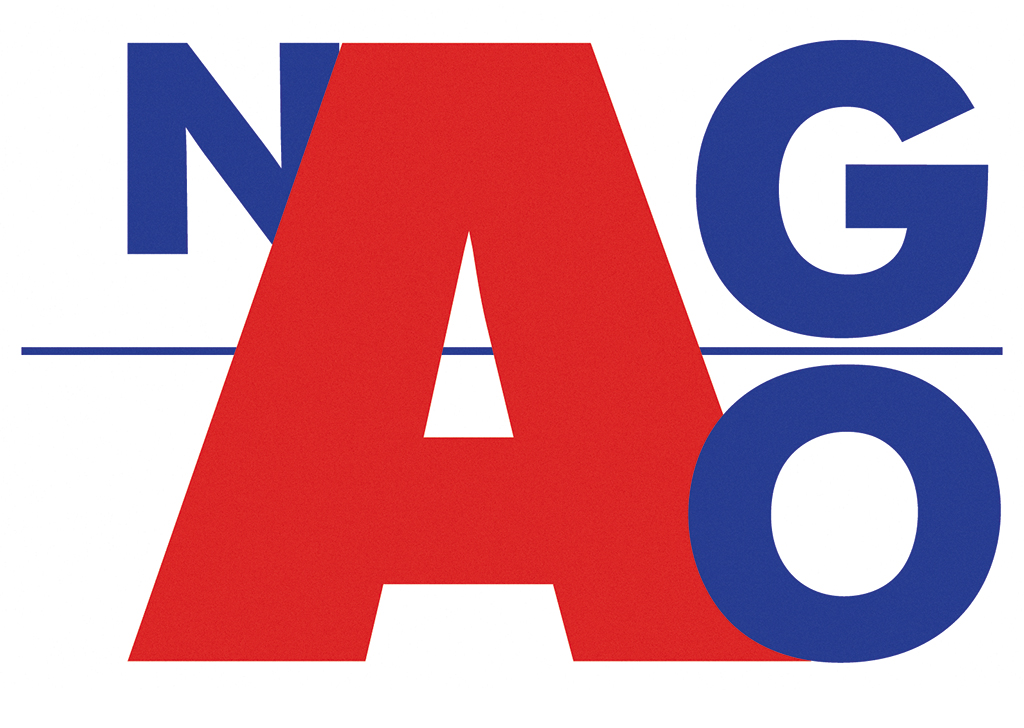
NAGO
Registrator Kiko Luijten at work, 2010
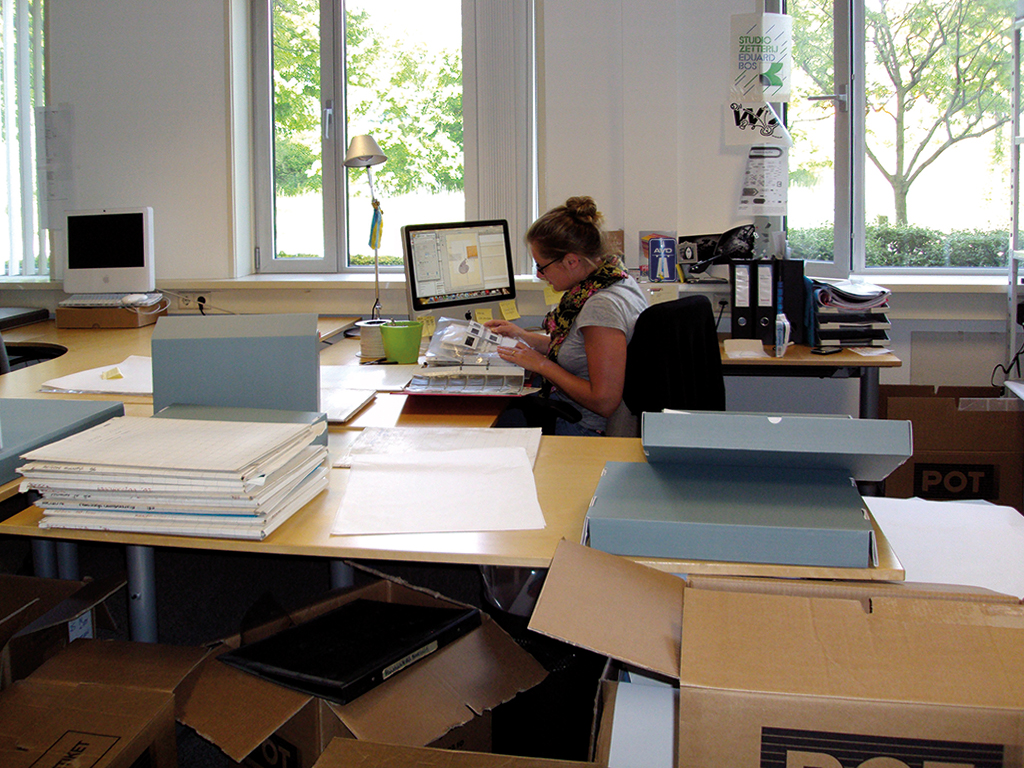
Karin van der Heiden left NAGO in 2008, after more than nine years of acquiring important graphic design archives and making these accessible. Marie Christine took over and became part-time director of NAGO. The intended collaboration with the Graphic Design Museum in Breda, which later became MOTI, was never properly established. An attempt to merge NAGO with the Graphic Design Museum failed. MOTI focused more on contemporary graphic design, while NAGO was mainly concerned with design archives and their artistic and historical value. A conflict over the promised finances for making the design heritage accessible also worsened the relationship between the two institutions.
Without MOTI, NAGO simply continued with the approach that had been adopted with great energy and commitment by many since 1992. As part of the Masterplan Inhaalslag Vormgevingsarchieven (Master Plan Design Archives Catch-Up) (2007), commissioned by sector association Premsela, a list was compiled of important graphic and industrial designers whose work should be preserved for the Netherlands. NAGO had an important role in this.
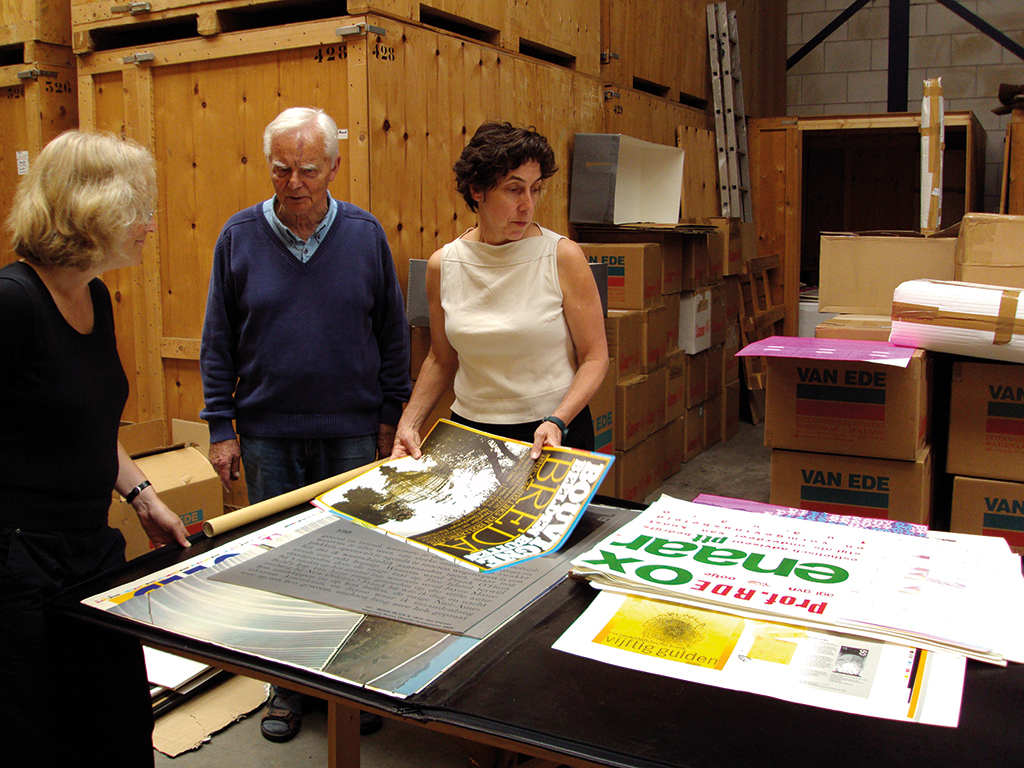
Ootje Oxenaar with his wife Dawn Barrett in the depot in Wassenaar, 2009
The Oxenaar archive has been made available digitally by the NAGO and then transferred to the Special Collections of the UvA (now the Allard Pierson).
High on the list were designers Benno Wissing and Ootje Oxenaar, who had both spent the last years of their careers in the United States. Marie Christine brought their archives to the Netherlands, where the material was then organised and made accessible digitally. After that, the archives of Studio Dumbar (Rotterdam), Anthon Beeke (Amsterdam) and Cor van Velsen (Hilversum) were acquired and made accessible. The archives of the important industrial designers Joop Istha (Utrecht) and Karel Suyling (Heemstede) were also acquired and made accessible. In 2017, the archive of Wim Gilles finally came from Canada to the Netherlands.
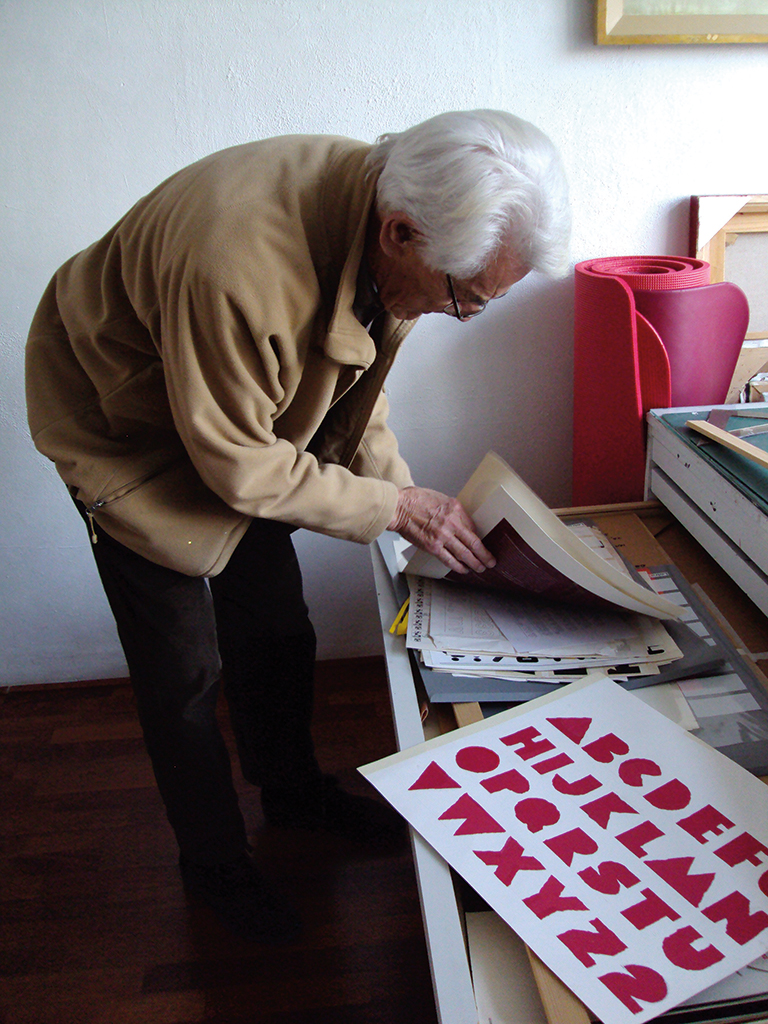
Ad Werner with his archive in his home in Amsterdam, 2009
Ad Werner’s archive has been digitally unlocked by the NAGO and subsequently housed in the Special Collections of the UvA
(now the Allard Pierson)
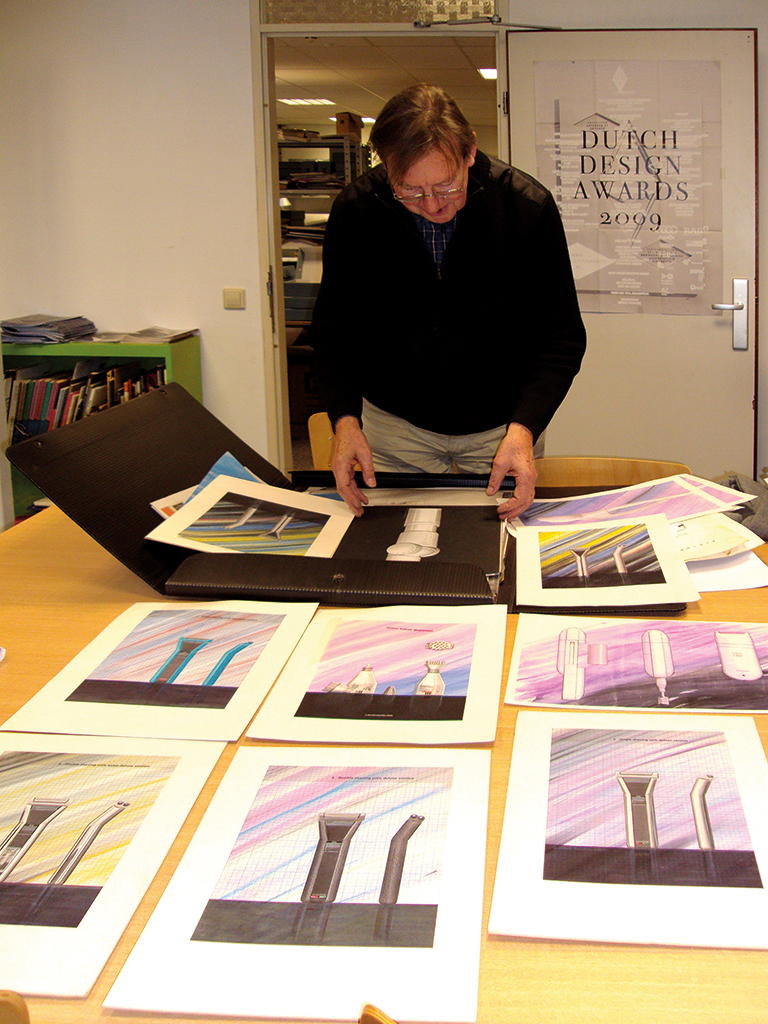
Joop Istha organizes his archive at the NAGO, 2010
The archive of Joop Istha has been digitally unlocked by the NAGO and subsequently housed at the Louis Kalff Institute / RHCe.
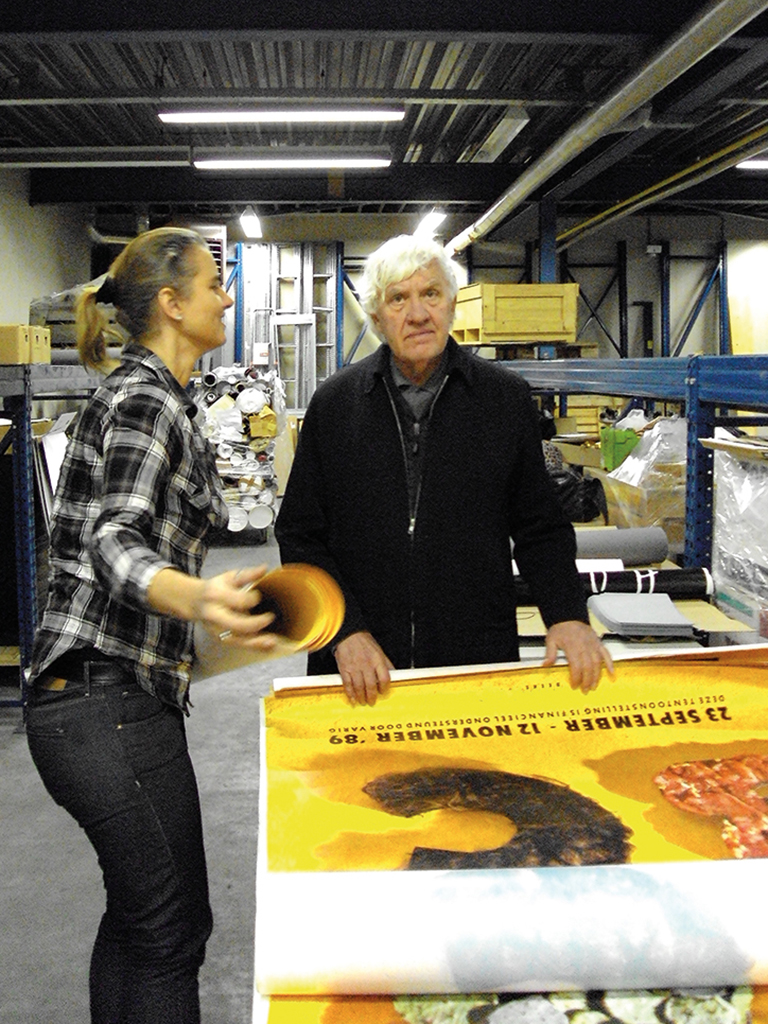
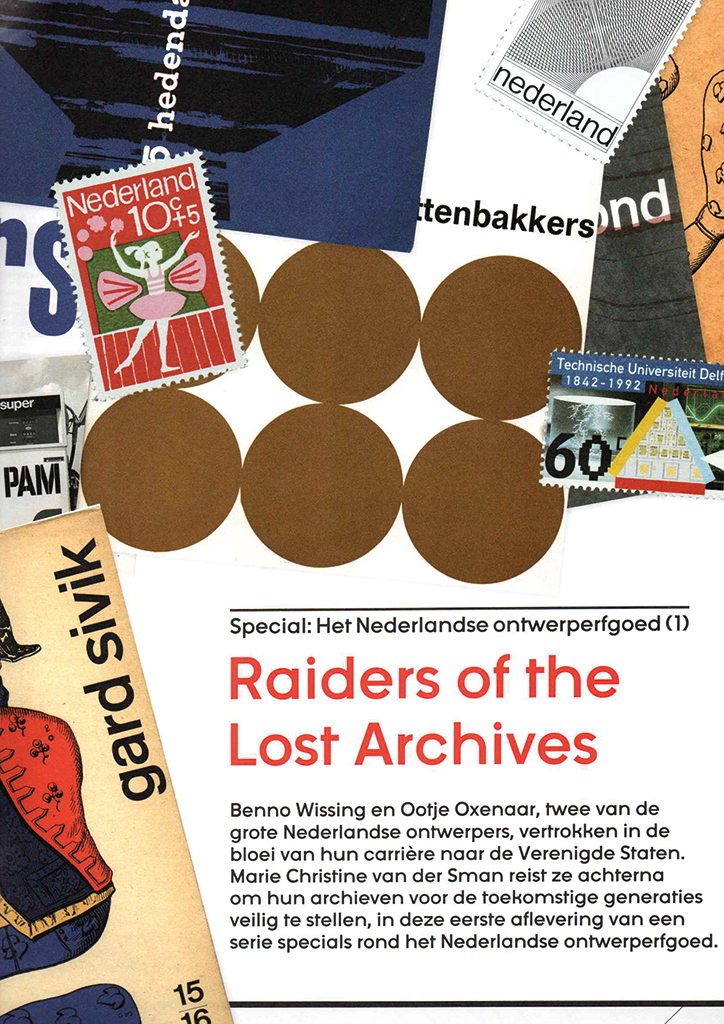
Anthon Beeke selects his own archive with his daughter Borinka in the Rotaform depot in Lelystad, 2010
The archive of Anthon Beeke has been made digitally accessible by NAGO and then stored at the Special Collections of the UvA (now Allard Pierson)
Article Raiders of the Lost Archives in Vormbericht BNO, November 2008
Marie Christine published her findings in Vormberichten, the member magazine of BNO. Between November 2008 and January 2011, eight specials on Dutch design heritage were published. The following quote from ‘Raiders of the Lost Archives’ (Vormberichten 11/2008) illustrates how complex the process of acquiring design archives can be:
“During my conversation with Ootje Oxenaar, it turned out that only a small part of the archive of his work is in Barrington. Other material had been left behind in the Netherlands. Since his emigration, moving boxes with personal material have been stored in a depot, which probably contain original design drawings. In his office, Ootje keeps a small archive of designs for banknotes and sketches for the euro that was never implemented. The cupboards and boxes also contain finished products such as books and brochures. There is work to be done here. I am offering on behalf of NAGO to assist in arranging and making an inventory of the material, both on-site and in the Netherlands. The only condition is that the archive will be transferred to NAGO. Our aim is to preserve this ‘for eternity’ and to make it accessible to a wide audience (…), I explain. “I like that, the idea that work is saved for eternity,” he says as we shake hands in parting.“
Acquiring design heritage is important, but making the material digitally accessible is at least as important. To achieve this, the ADVIZ website was created in collaboration with Pim Reinders, coordinator of the ReclameArsenaal. On this website all the collective archives, as well as the collection of the Poster Museum in Hoorn, became searchable.
ADVIZ website, containing the complete database of NAGO, ReclameArsenaal and Poster Museum Hoorn. Design by Fabrique, 2011
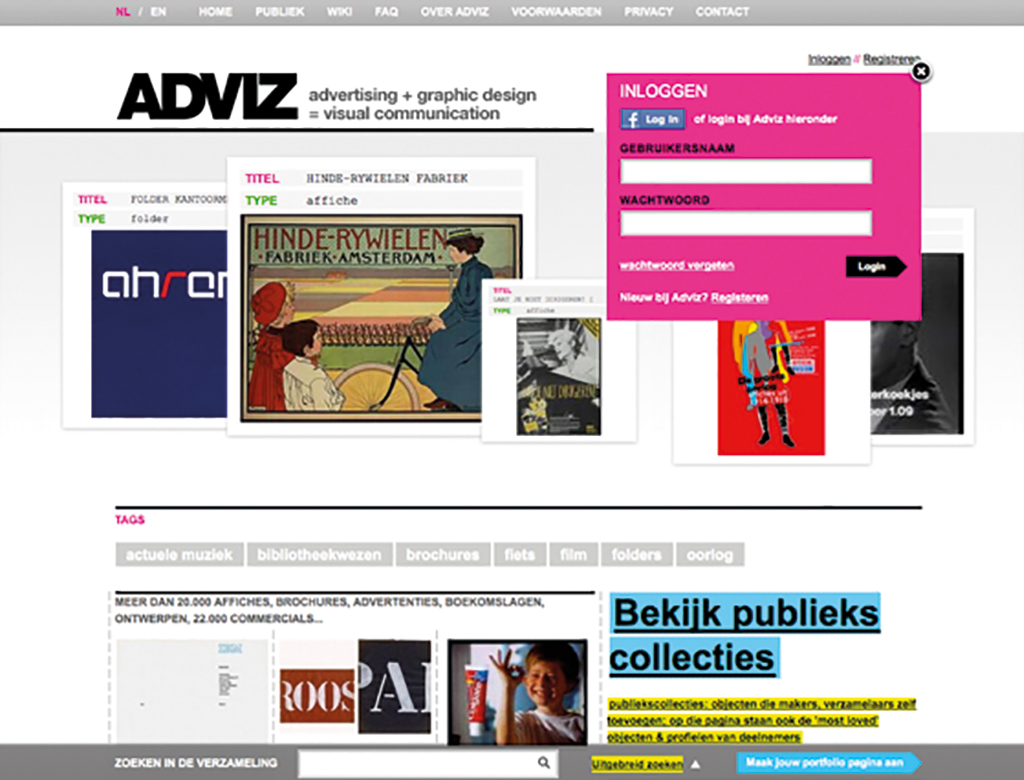
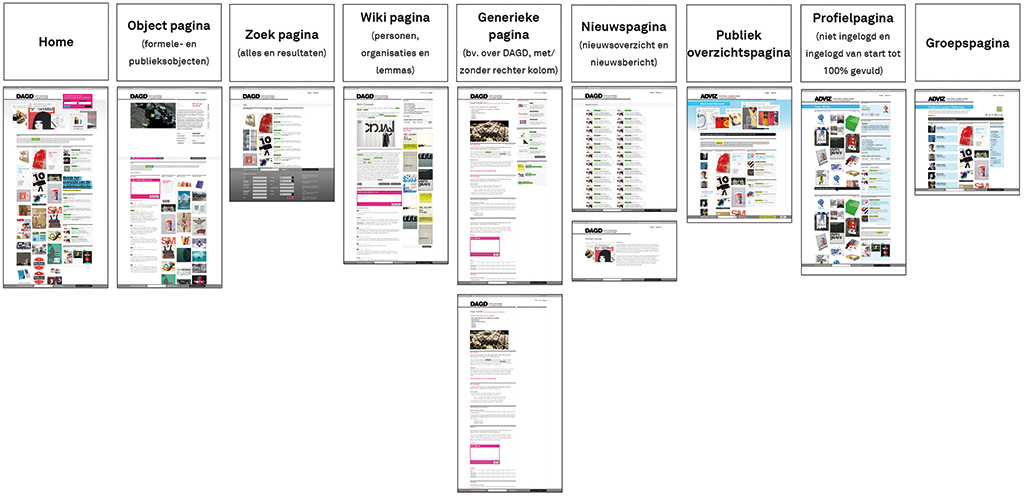
Another project of a national level was the Nederlands Afficheproject (Dutch Poster Project). In addition, 52,000 posters (from 1870 to the present) in public collections were visually made accessible in the Geheugen van Nederland (Memory of the Netherlands), a project by the National Library. All posters were scanned in high resolution, described and stored in a database. In doing so, NAGO collaborated with Special Collections of the University of Amsterdam, the Theatre Institute, ReclameArsenaal, EYE Film Museum, the International Institute for Social History, the Hoorn Poster Museum, and the Museum for Communication in The Hague. The project was completed in 2012.
Marie Christine: “It was a wonderful project, in which all posters were scanned, and the collaboration with colleagues from other heritage institutions was also very fruitful. I still think it is very unfortunate that the Stedelijk Museum in Amsterdam did not want to participate due to a lack of staff. This was of course a nonsensical argument, since all the participating institutions had very limited staff, but they just thought the project was too important not to participate. In fact, the collection of the Stedelijk should still be added to the Geheugen van Nederland in order to provide a fuller picture of the most important design and advertising posters.”
NAGO publications on the archives of Total Design, Karel Suyling and Studio Dumbar. 2009-2011
The archives of Total Design and Karel Suyling have been made digitally accessible by NAGO and are housed in the Special Collections of the UvA (now Allard Pierson)
The Studio Dumbar archive is made digitally available by NAGO and housed at the Municipal Archives in The Hague. It can be consulted there.
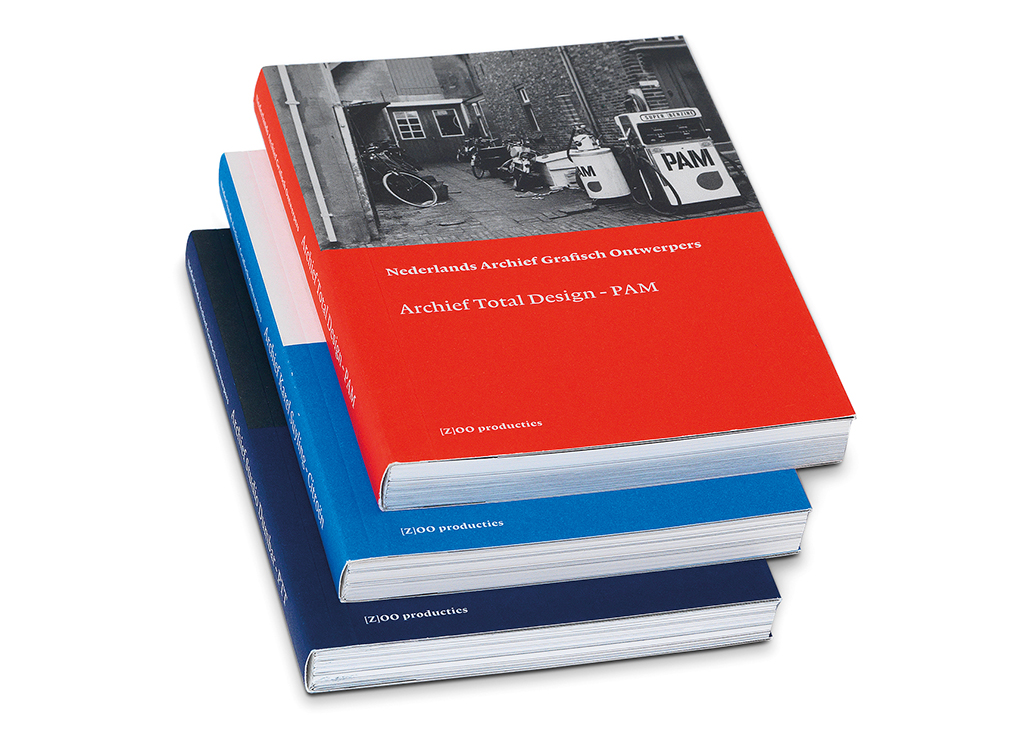
Marie Christine was director of NAGO for four years, and together with [Z]OO productions she made several NAGO publications. The Dutch Graphic Designers Archives Foundation was dissolved in 2014. A number of tasks were then transferred to the Wim Crouwel Institute, founded in 2013 by a collaboration between NAGO and the Special Collections of the University of Amsterdam (now the Allard Pierson). Most of the former NAGO archives are now managed by the Allard Pierson and can be consulted there.
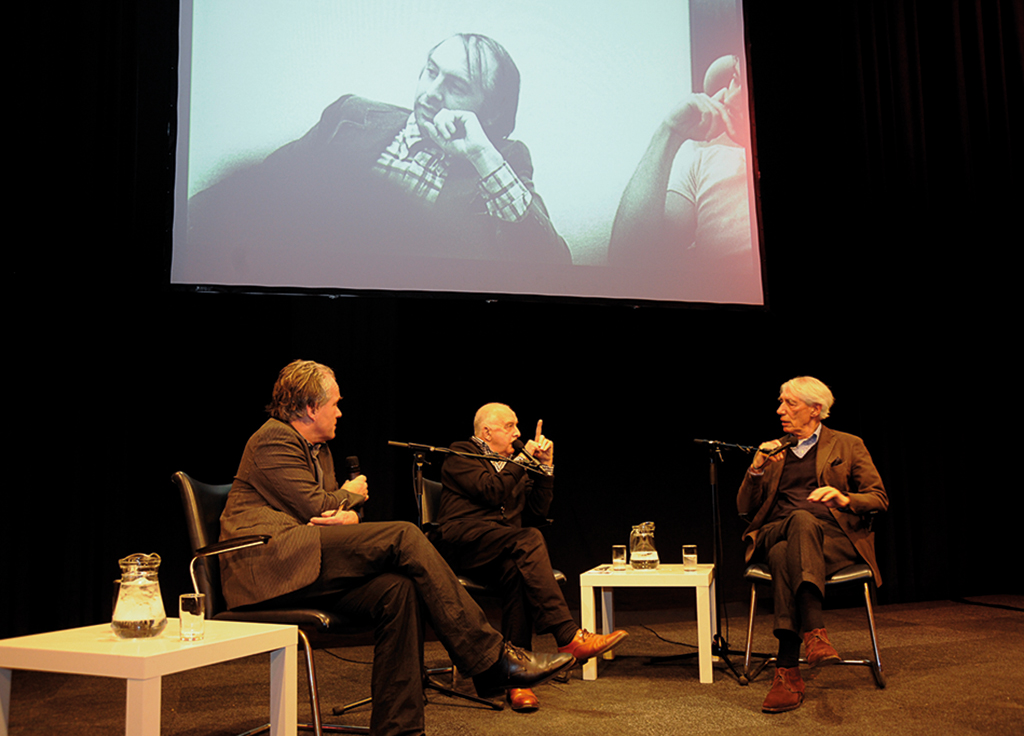
The Debate Wim Crouwel – Jan van Toorn
Lectures and book launch at Felix Meritis, 2008. Also the celebration of Wim Crouwel’s eightieth birthday. Organization by NAGO, BNO, Premsela and [Z]OO productions.
The archive of Jan van Toorn is owned by the Stedelijke Museum Amsterdam and can be consulted there. The archive of Wim Crouwel was digitally unlocked by the NAGO on behalf of the Stedelijke Museum Amsterdam and is available for consultation there.
Louis Kalff Institute
It was not only the heritage of graphic design that demanded government policy and industry attention. At the initiative of Marie Christine, Marcel Duijghuisen and Robert van Rixtel, the Louis Kalff Institute was founded on 15 April 2011, the heritage centre for industrial design archives, housed at the Regional Historical Centre in Eindhoven. The Louis Kalff Institute focuses on the conservation and management of endangered industrial design heritage. This material is (digitally) made available for education, research and presentations in publications, lectures and exhibitions. Marie Christine was the first treasurer of the Louis Kalff Institute and held that position until 2015.
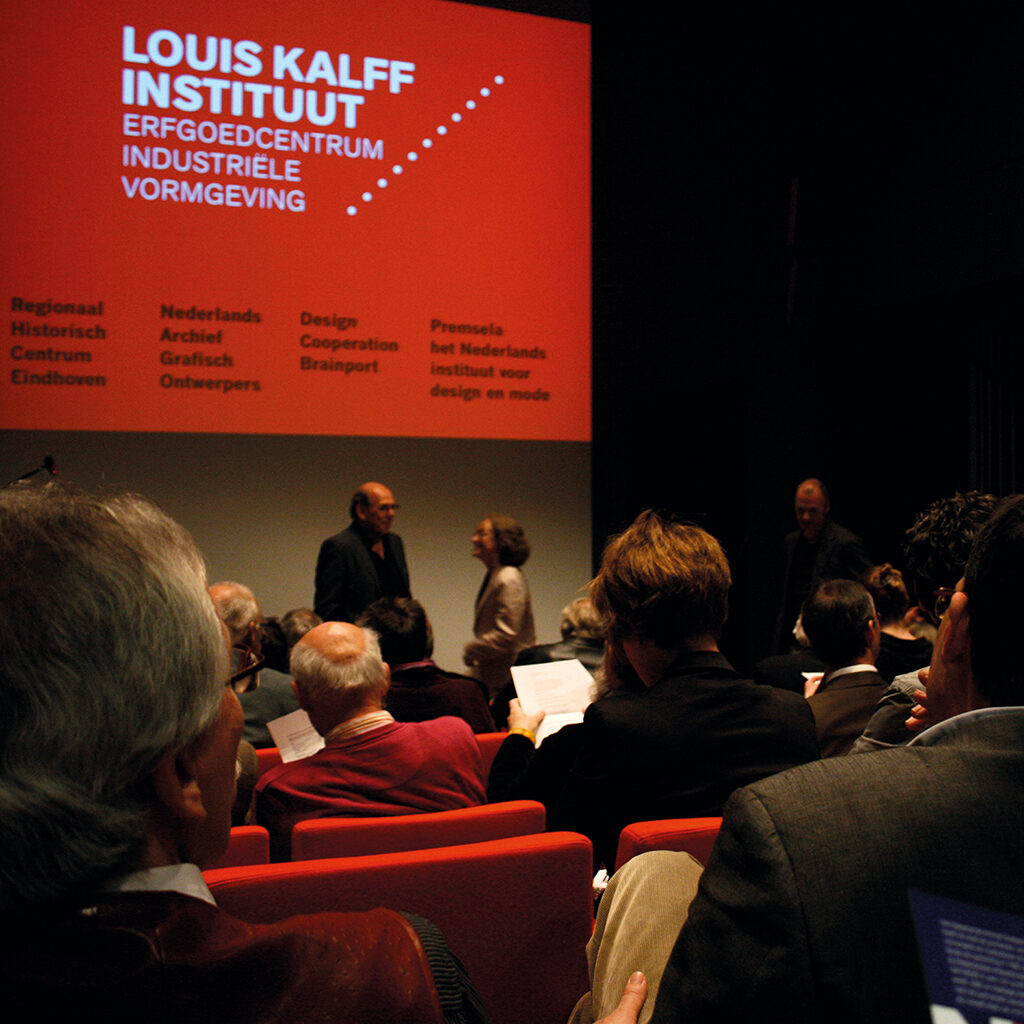
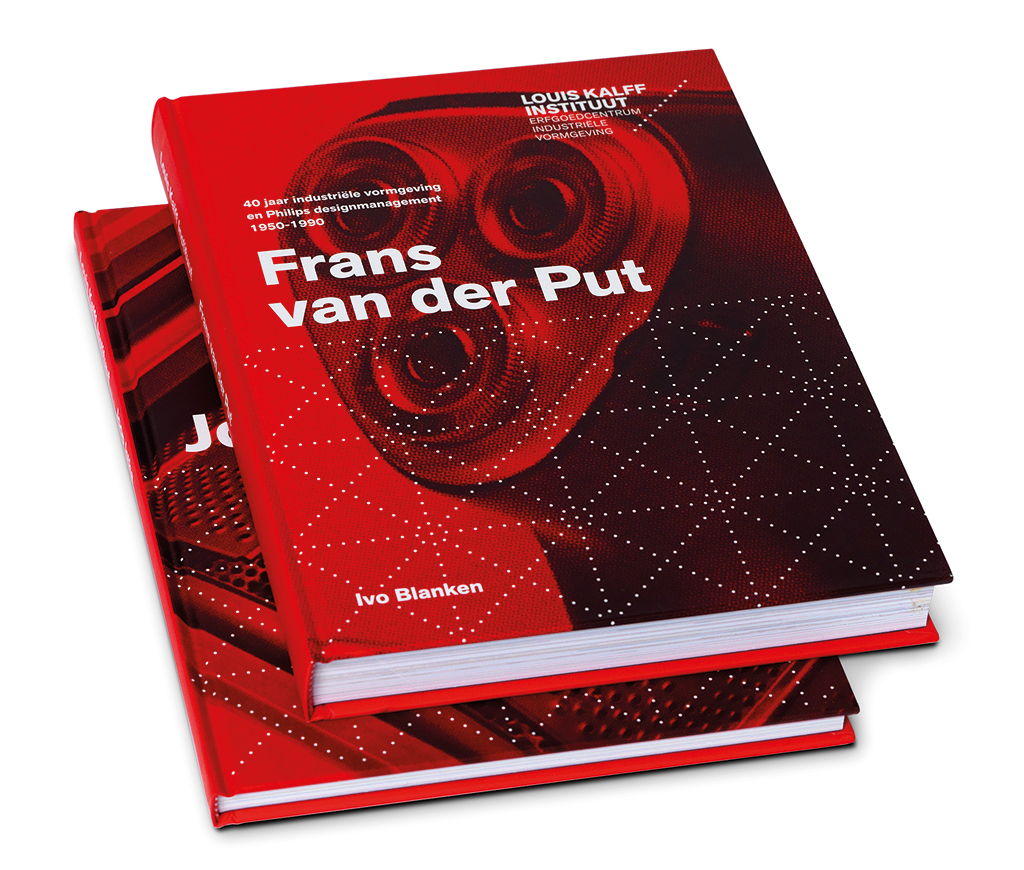
Louis Kalff Institute
Founding symposium at the Van Abbe Museum Eindhoven, 2011
Publications on Joop Istha, 2011 and Frans van der Put, 2013
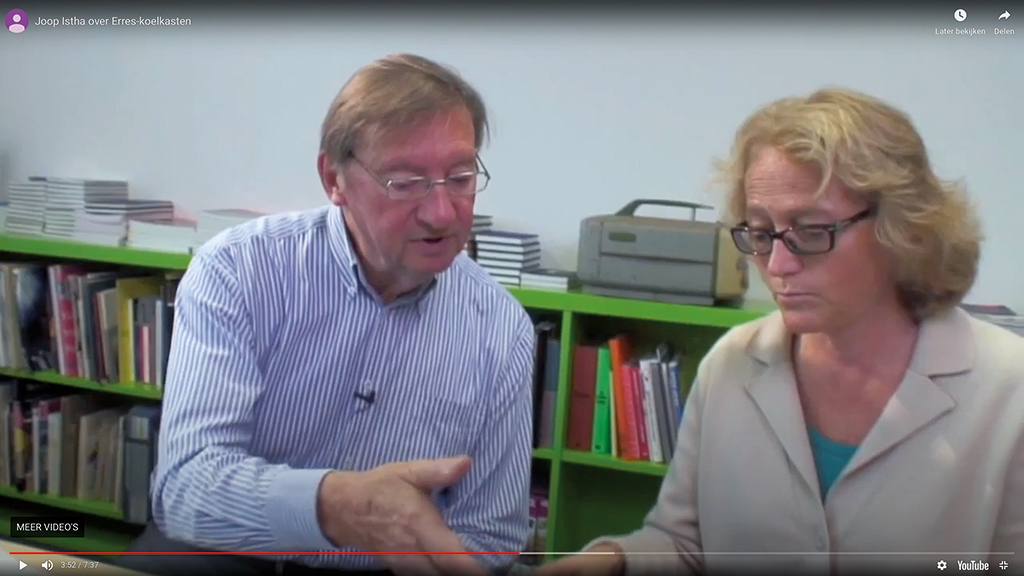
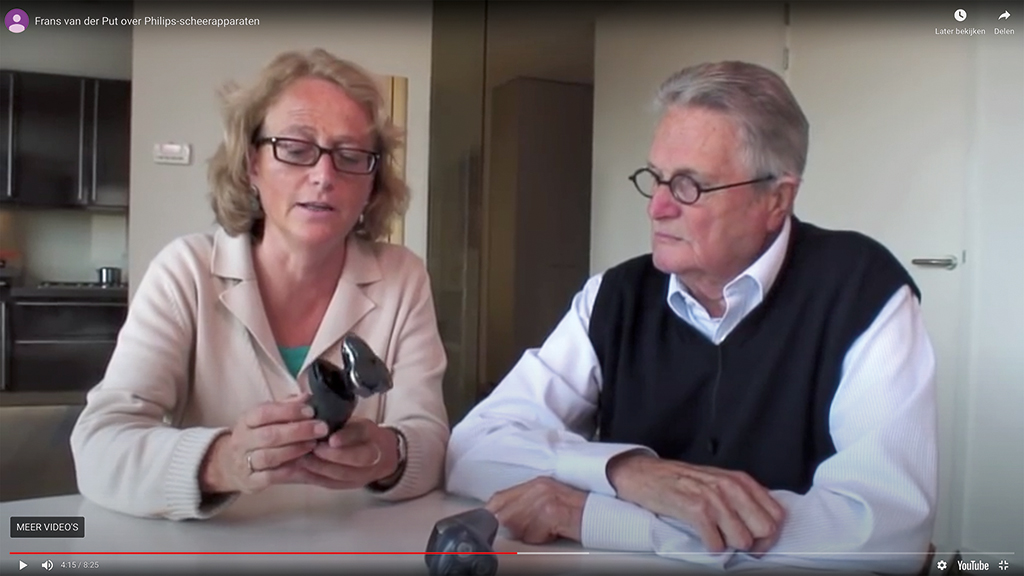
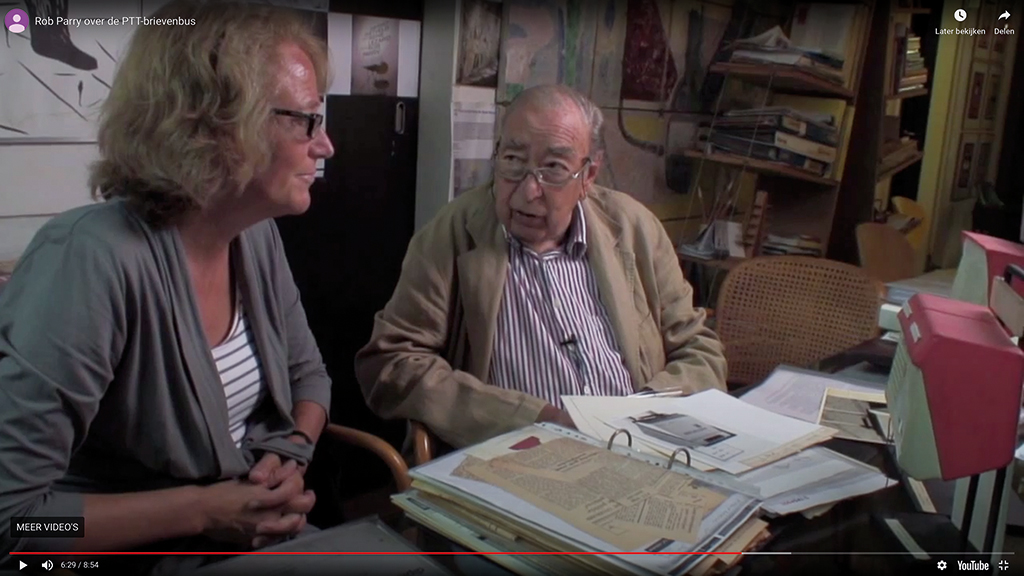
Series of interviews with Joop Istha, Frans van der Put and Rob Parry. Videos by Andrew Fallon 2011
The archives of Joop Istha and Frans van der Put have been made digitally accessible by NAGO and is subsequently housed at the Louis Kalff Institute / RHCe.
This was not her only board position. She was also chair/treasurer of the Dutch National Ethnographic Collection Foundation, treasurer of the Dutch Natural History Collections Foundation, member of the Supervisory Board of Korzo Theatre, member of the Supervisory Board of the National Maritime Museum, chair of the International Council of Museums in the Netherlands, and member of the Executive Council of ICOM in Paris.
Museon
On 1 November 2011, Marie Christine became director of Museon in The Hague, an entirely new chapter in her career. With more than 200,000 visitors and a revenue of more than six million euros per year, Museon is a large educational museum in The Hague with more than sixty staff members. The scale of the museum was not the only attraction to make the switch from NAGO to Museon. After managing collections in the field of cultural history and design, she now managed a museum with collections in the field of natural history, ethnography and scientific instruments. This was something that Marie Christine had never done before and was very curious about.


Museon
New exhibition One Planet, 2016
Brochure Museon werkt aan de toekomst (Museon is working on the future), 2016
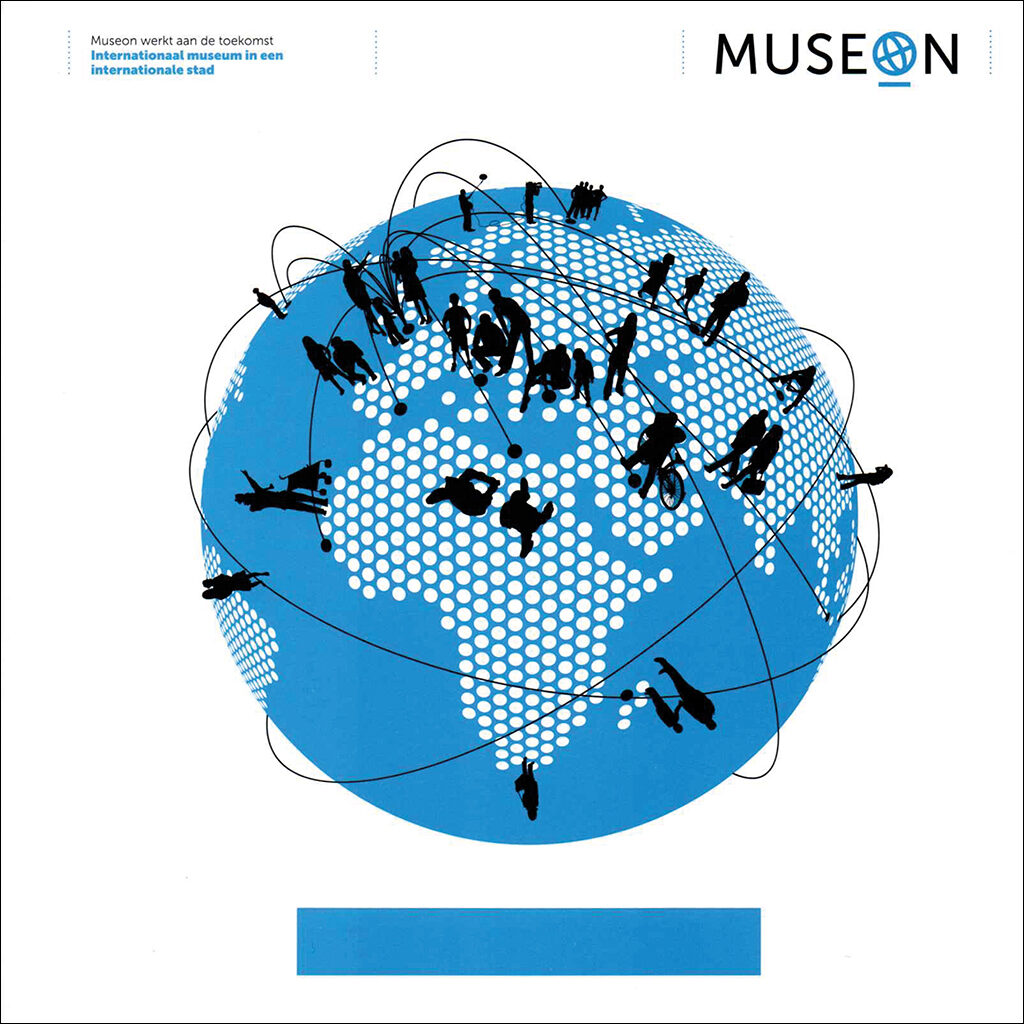
Marie Christine was director until 1 January 2019. During the seven years of her directorship, she was (again) faced with severe budget cuts. The museum had to give up ten staff positions during a reorganisation in 2012 and the museum’s policies were reassessed. In a press statement, the Museon stated that “the museum will profile itself more as a world museum, where visitors learn about themes such as melting polar caps and water problems.”
This ambition was concretised in the new exhibition One Planet, which opened in October 2016. The permanent exhibition was accompanied by a beautiful book written by Hub Kockelkorn and designed by Robert van Rixtel. Thanks to this exhibition the Museon was recognised by the United Nations as a regional information centre (UNric).
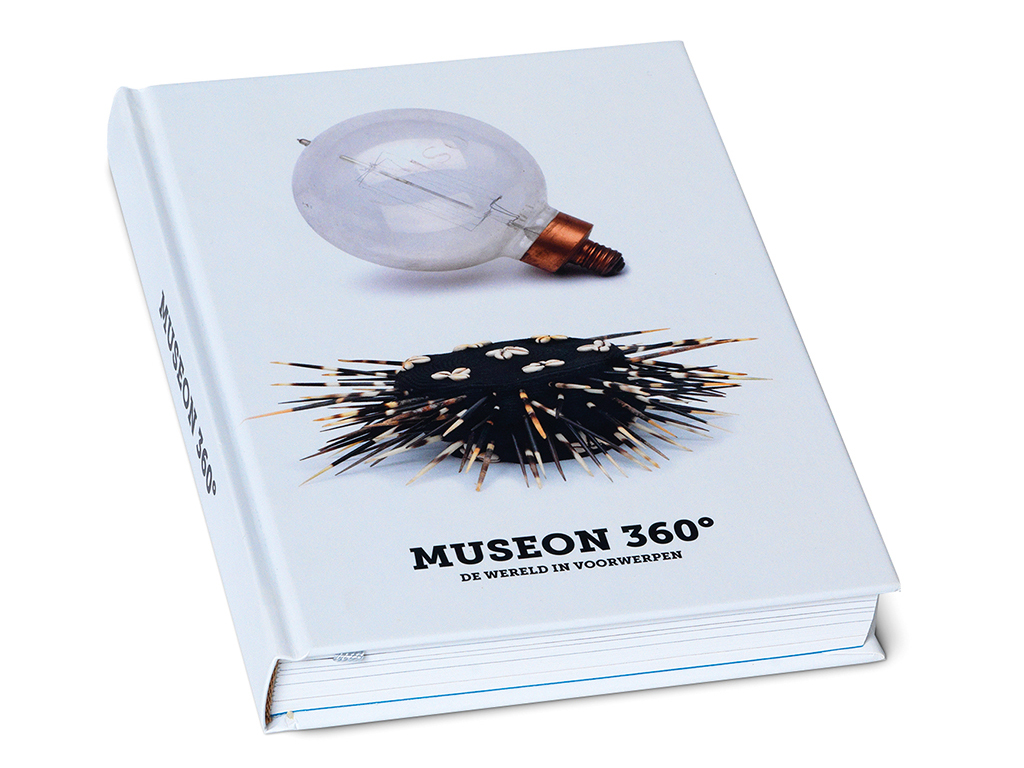
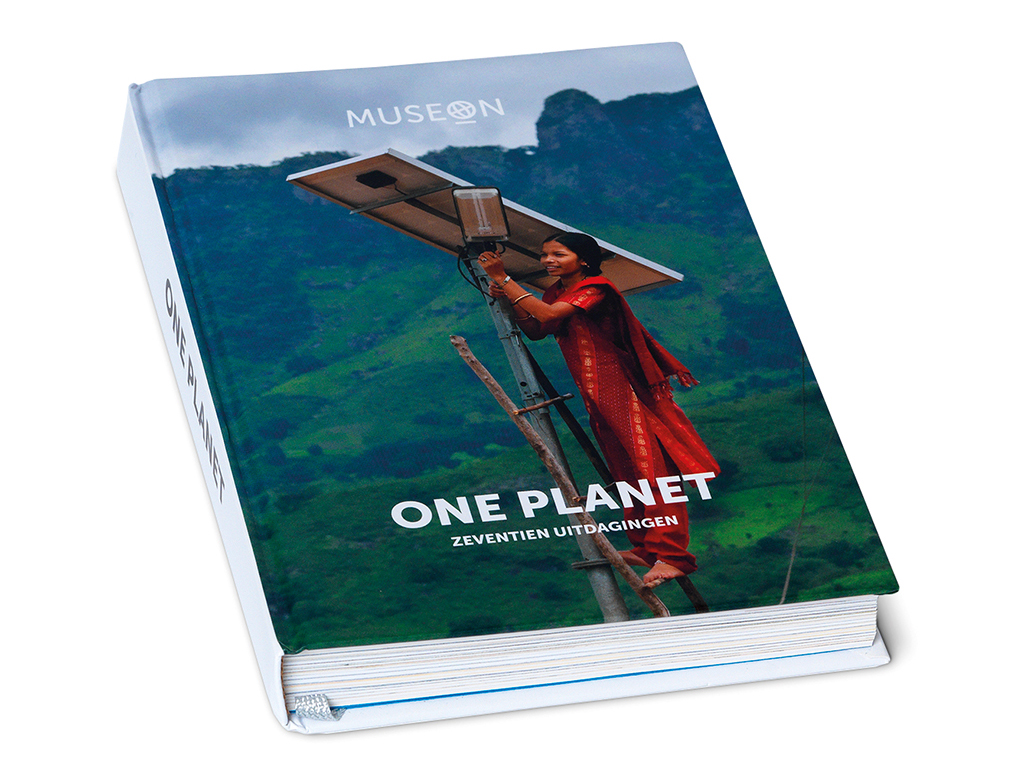
Museon Publications 2014-2016
The exhibition, which covers more than 1200 m2, was worked on by various designers. Friso Visser was responsible for the project management, Anne Brouwer and Northern Light produced the spatial design, the lighting design was created by Joost de Beij, and the showcases and most of the interactive media were realised by exhibition builder Bruns. Ilse van Marrewijk and Jan Heijnen provided the graphic design. Marie Christine received the honourable invitation to present One Planet at the World Summit of Science Centres in Tokyo (November 2017), as an example of a unique exhibition on sustainability worldwide.
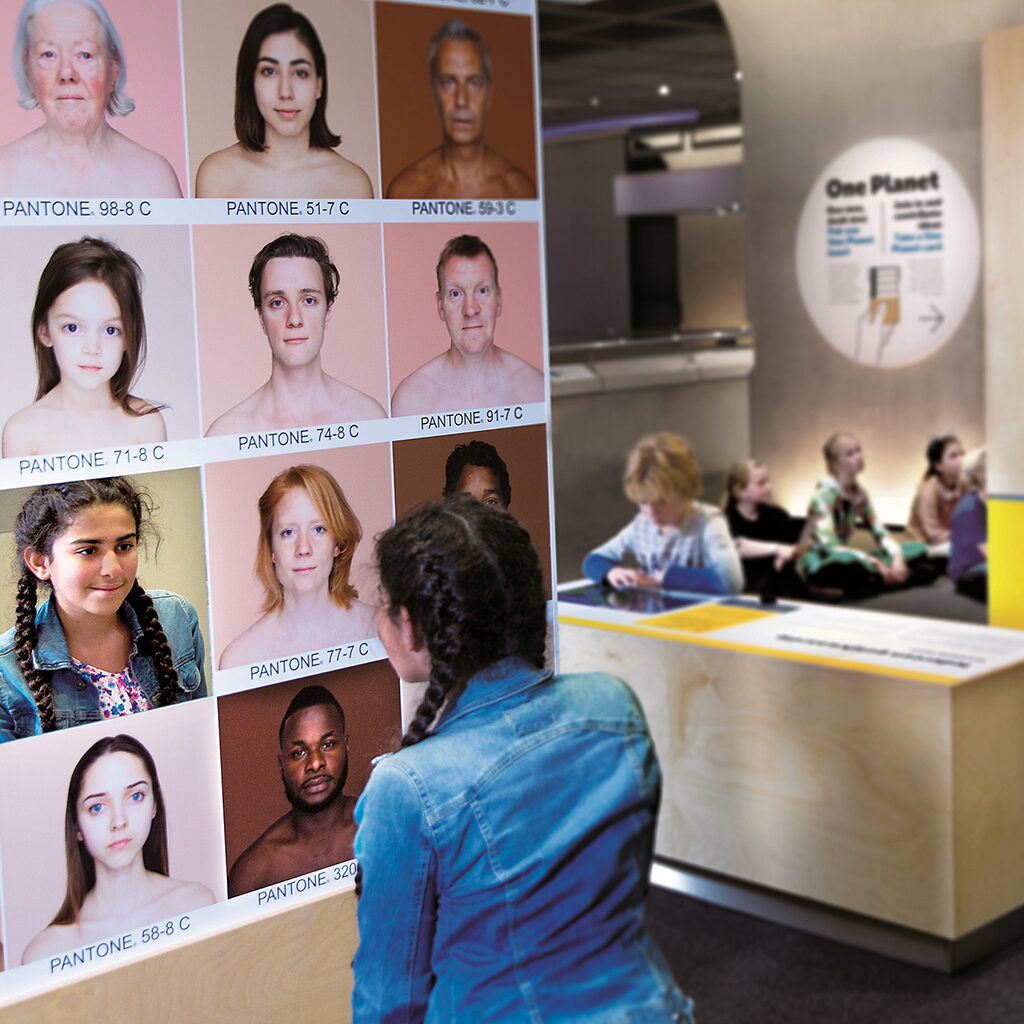
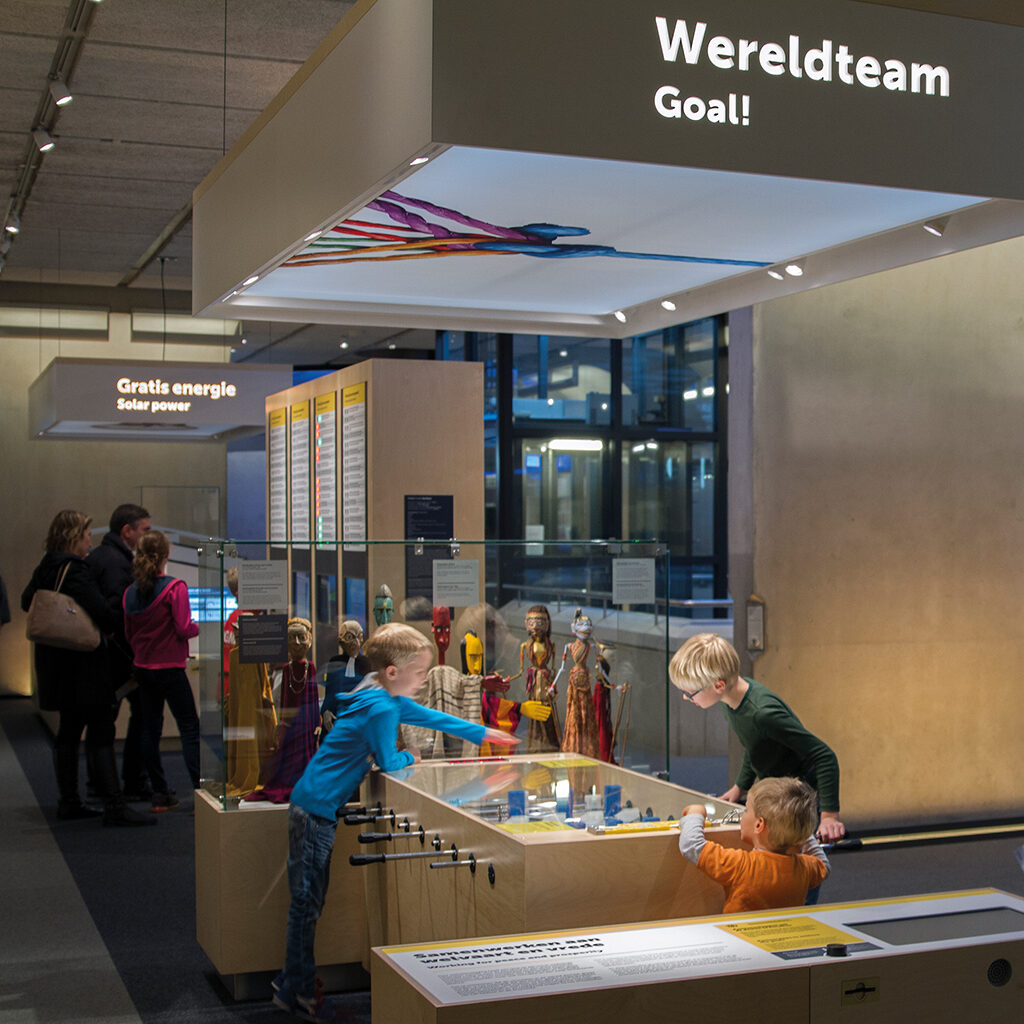
Museon New exhibition One Planet, 2016
With the refurbishment, attention was also paid to a more clear communication. Museon is a museum with an educational mission and the urgent message to cherish our planet. Therefore, in designing a new logo, there was an explicit desire to replace MUSEON’s “O” with a globe. This resulted in a beautiful logo and house style by graphic designer Jan Heijnen from The Hague. The pay-off: discover the world.
In addition, substantial investments were made in international partnerships and sustainable management of the building, in which Museon was awarded a gold certificate from Green Key, the international sustainability label for the tourism and recreational sector. In November 2018, the museum started a sustainability programme by opening a green roof. Of the 4000 m2 roof, 1700 m2 is now covered with solar panels and green plantation, which makes it a large green island within a dense urban area.
In the last year that Marie Christine worked at Museon, the museum received € 630,000 from the BankGiroLoterij for the renovation of Museon’s entrance area. For Marie Christine, the approval of her application was an important recognition of her work. In the media she stated:
“Museon will use the donation to redesign the Museon’s entrance, which will then meet the requirements of a contemporary museum: public-friendly and sustainable. The restaurant is also getting a facelift. This award is the crowning glory of our work. We have recently redesigned the Museon’s first floor and now we can also tackle the ground floor, which has been quite worn out by the large crowds since the opening of the building in 1986. It’s fantastic that we can do this.”
Before reaching the ’official’ retirement age, she decided to spend more time writing and reading. She loves to do this together with her husband in their house in France.
On her retirement as director of Museon, she received a very honourable award for her work in The Hague: the city medal of the municipality of The Hague, which was presented by Mayor Pauline Krikke on 18 December 2018.
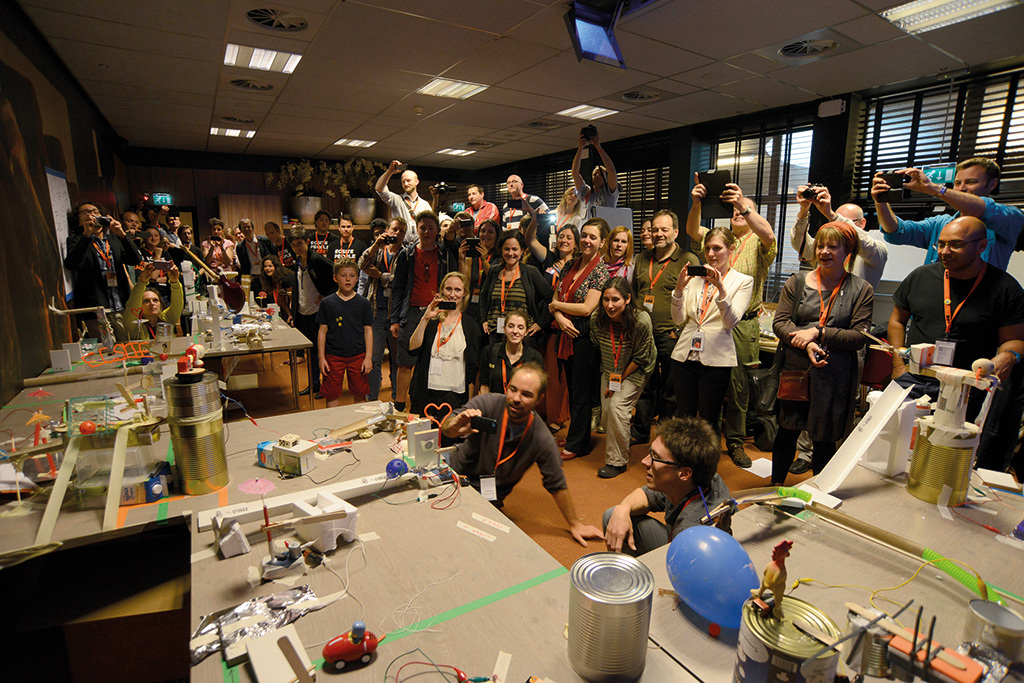
Ecsite conference with representatives from 200 science centres in Europe was held at Museon in 2014
Marie Christine van der Sman
born on 17 February 1956, Deventer
Author of the original text: Rob Huisman, November 2020
English translation and editing: Peter Hofstee
Final editing: Sybrand Zijlstra
Portrait photo: Aatjan Renders
